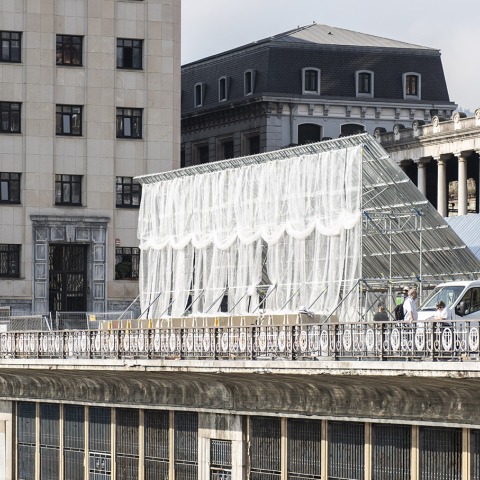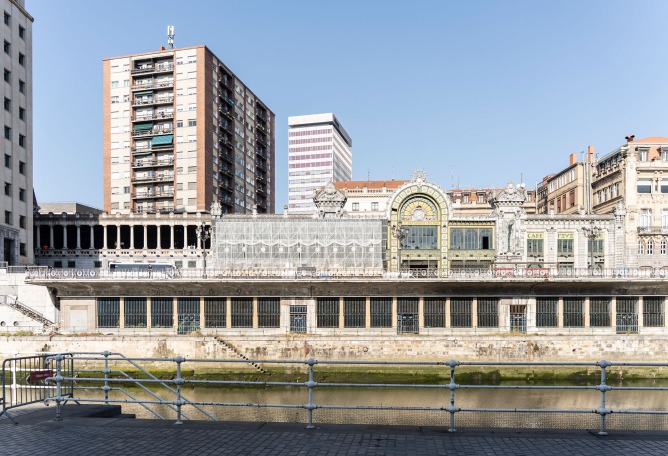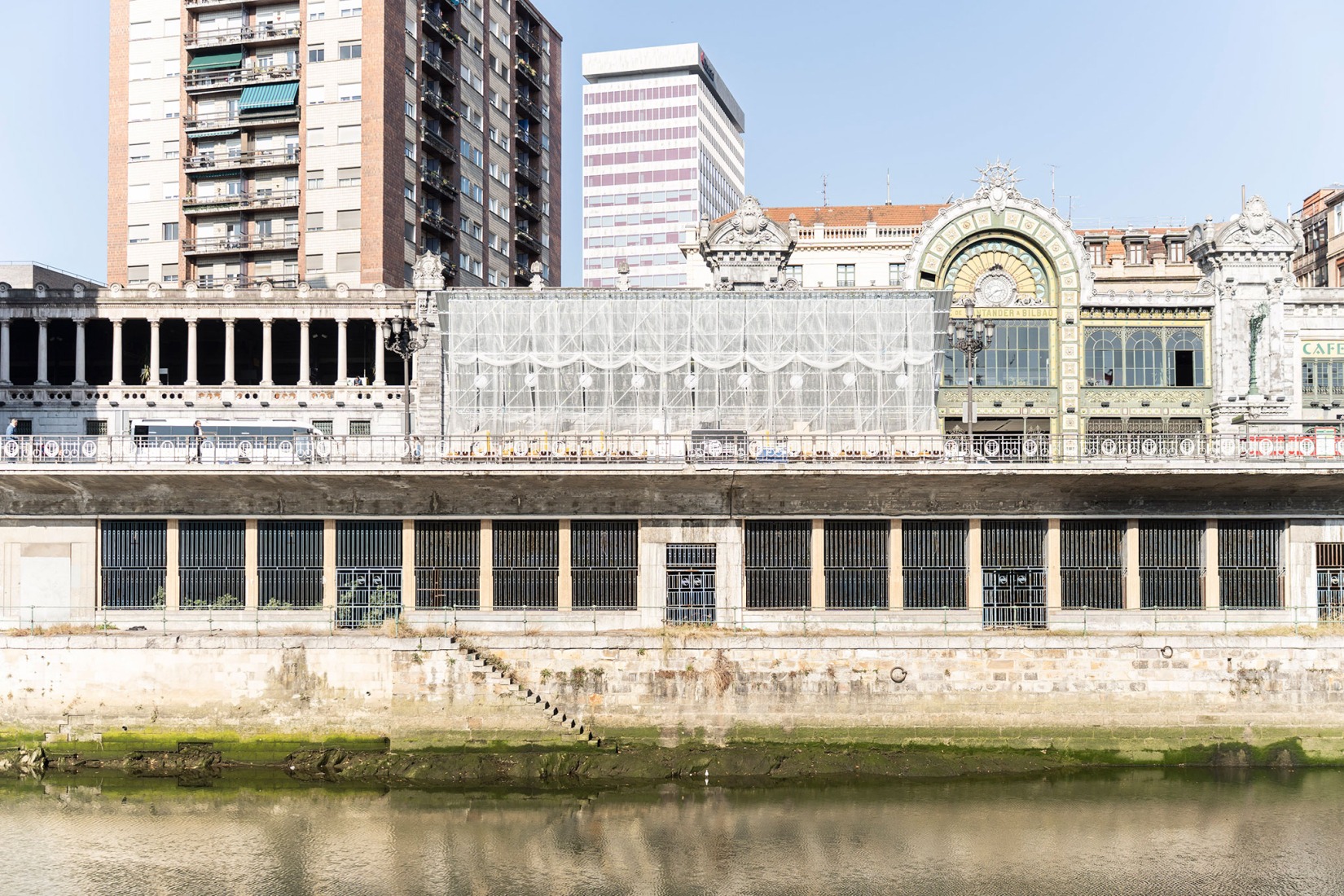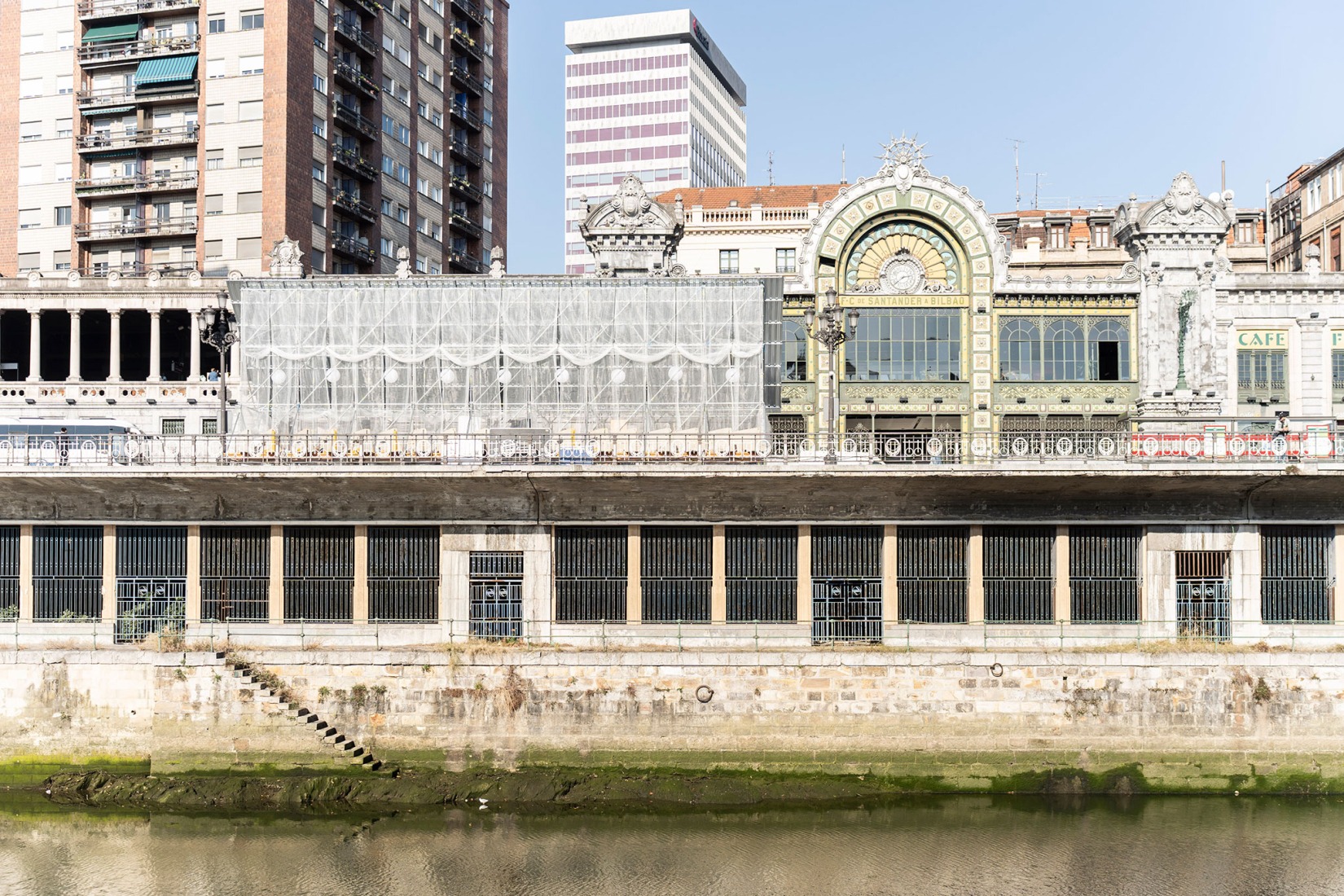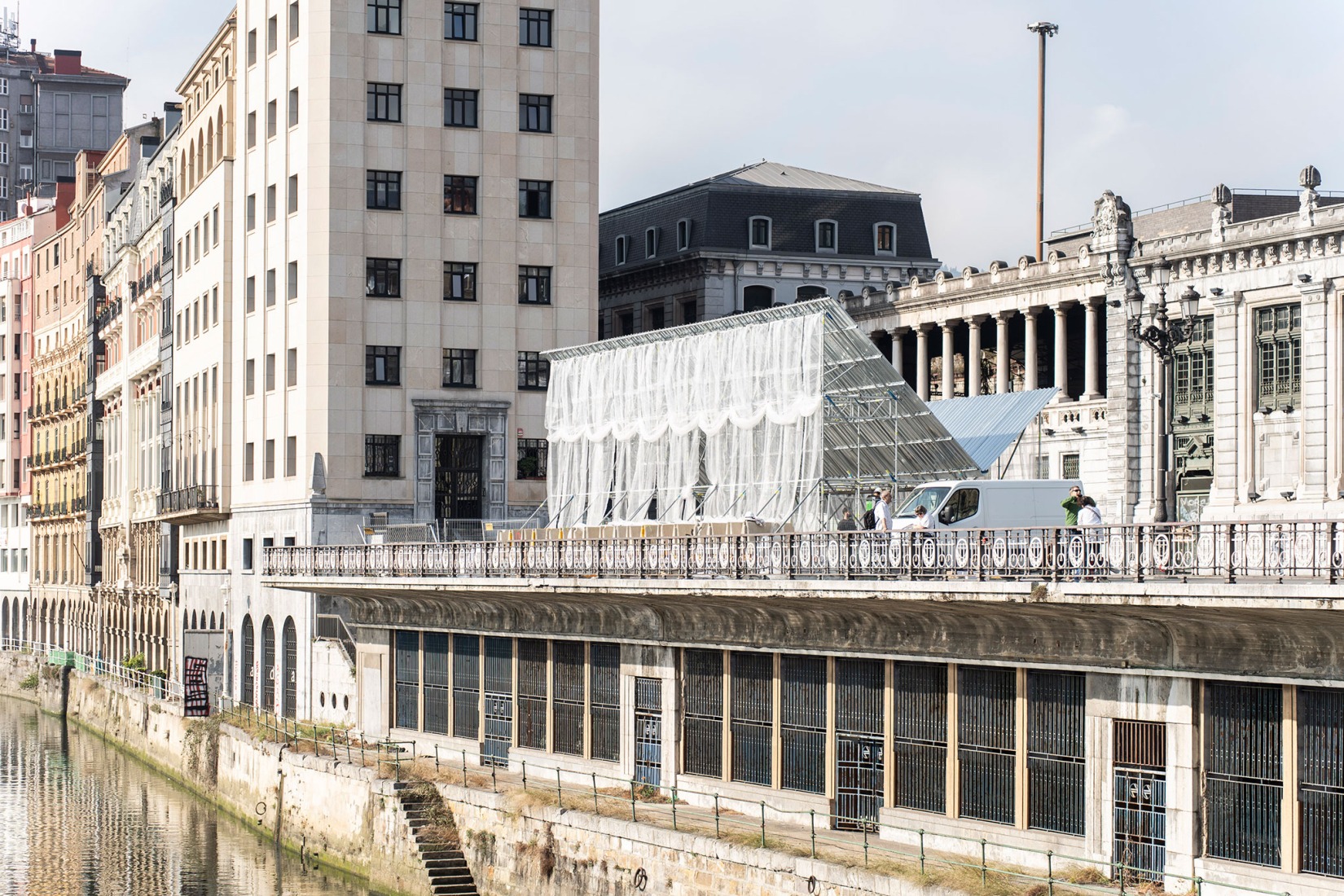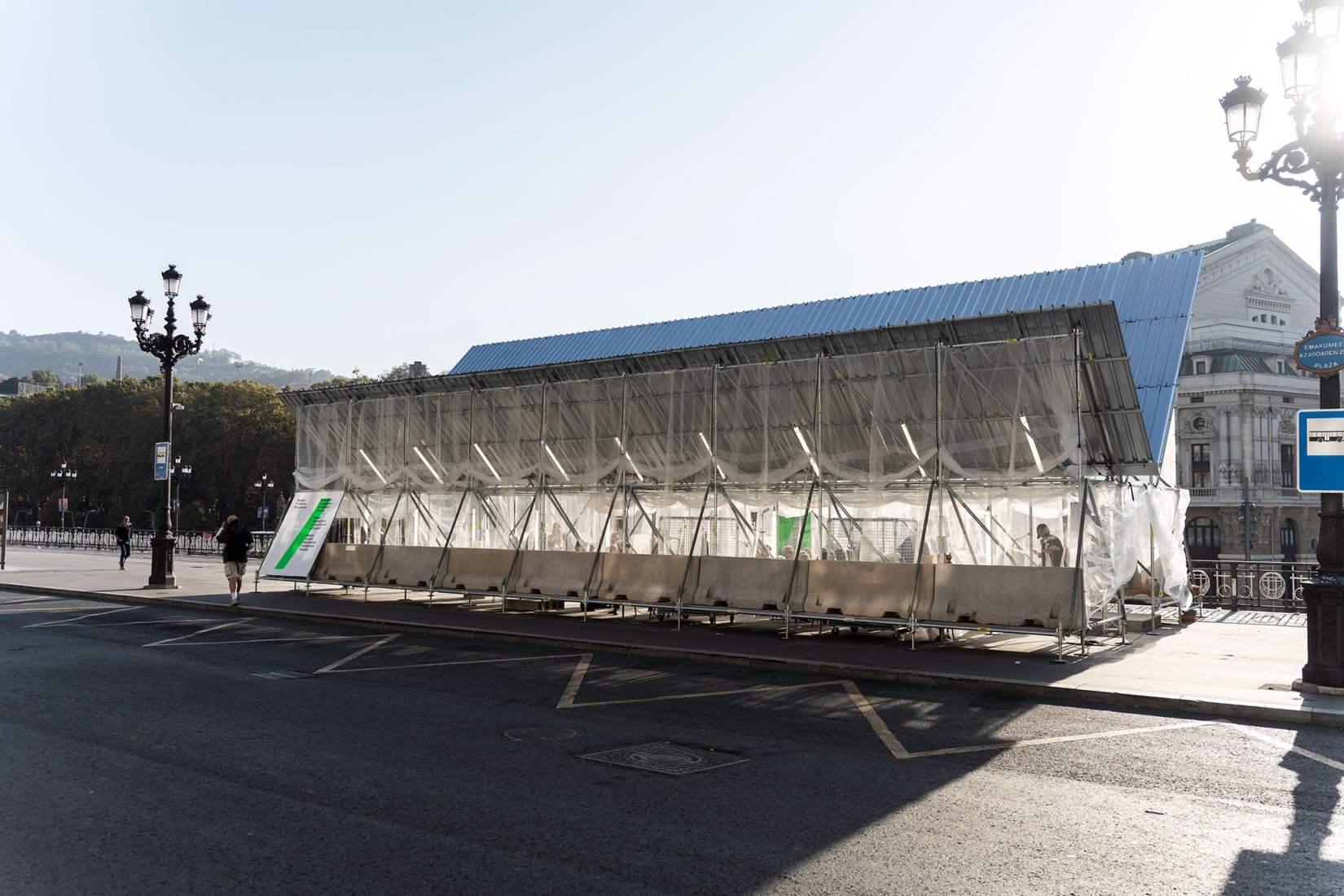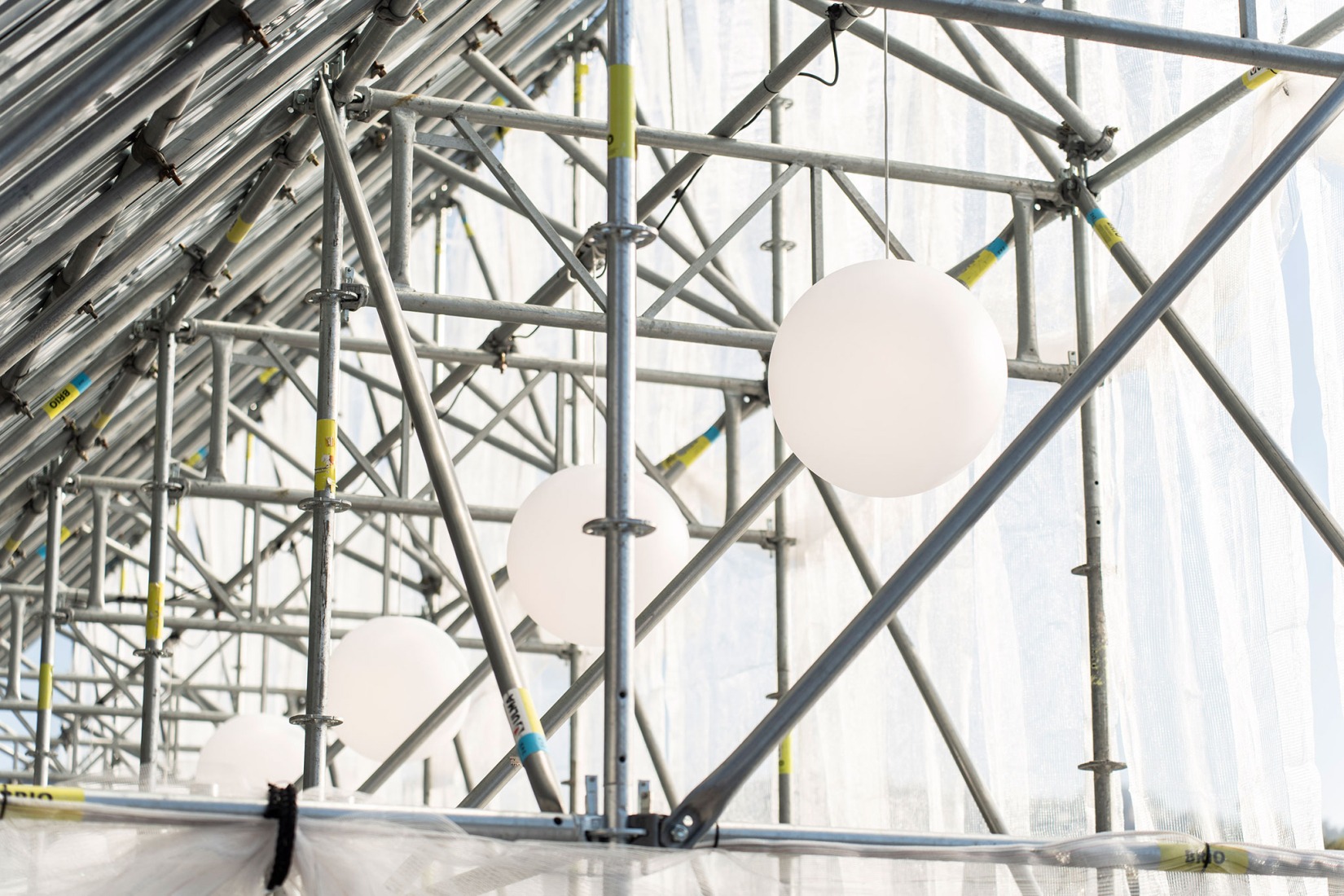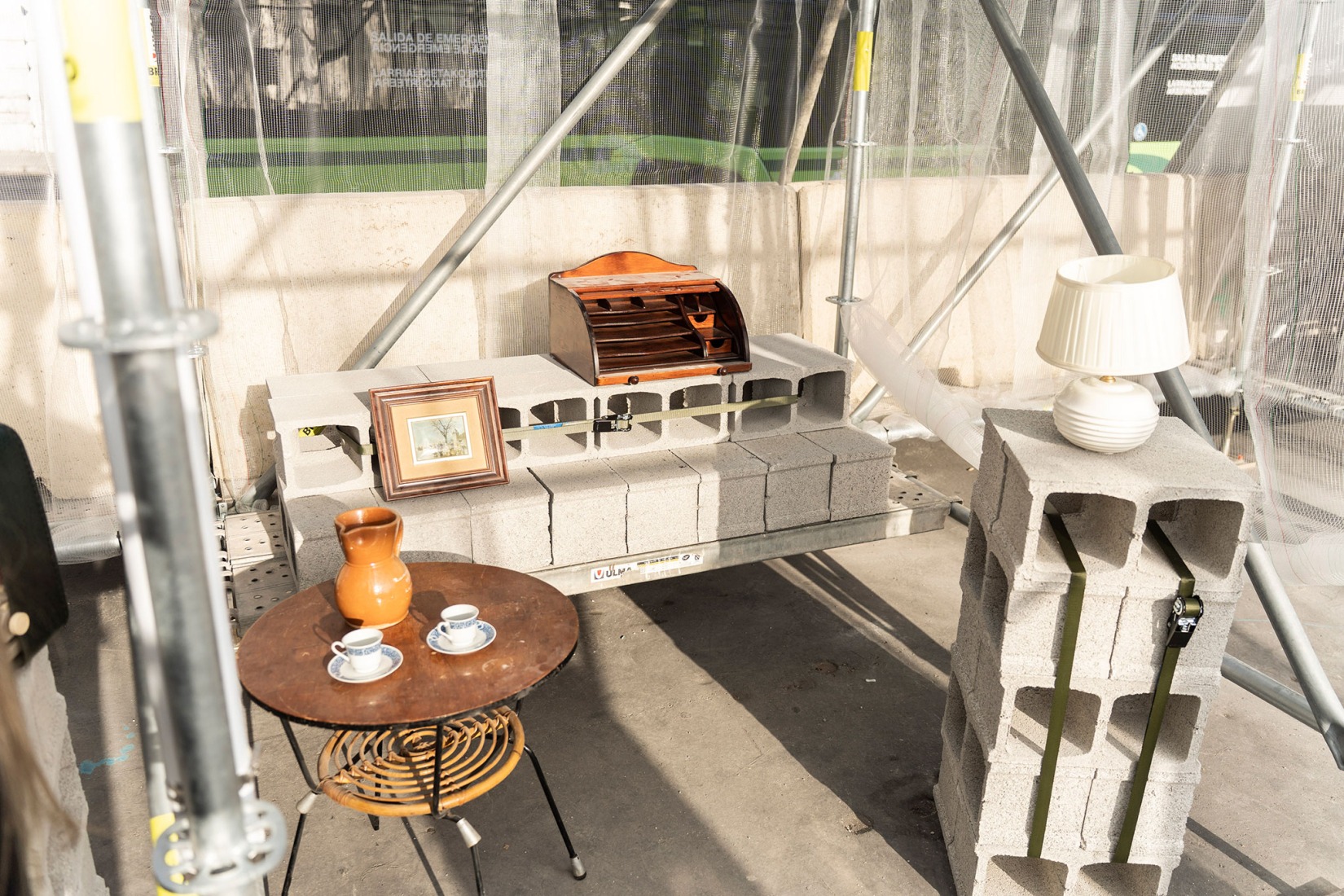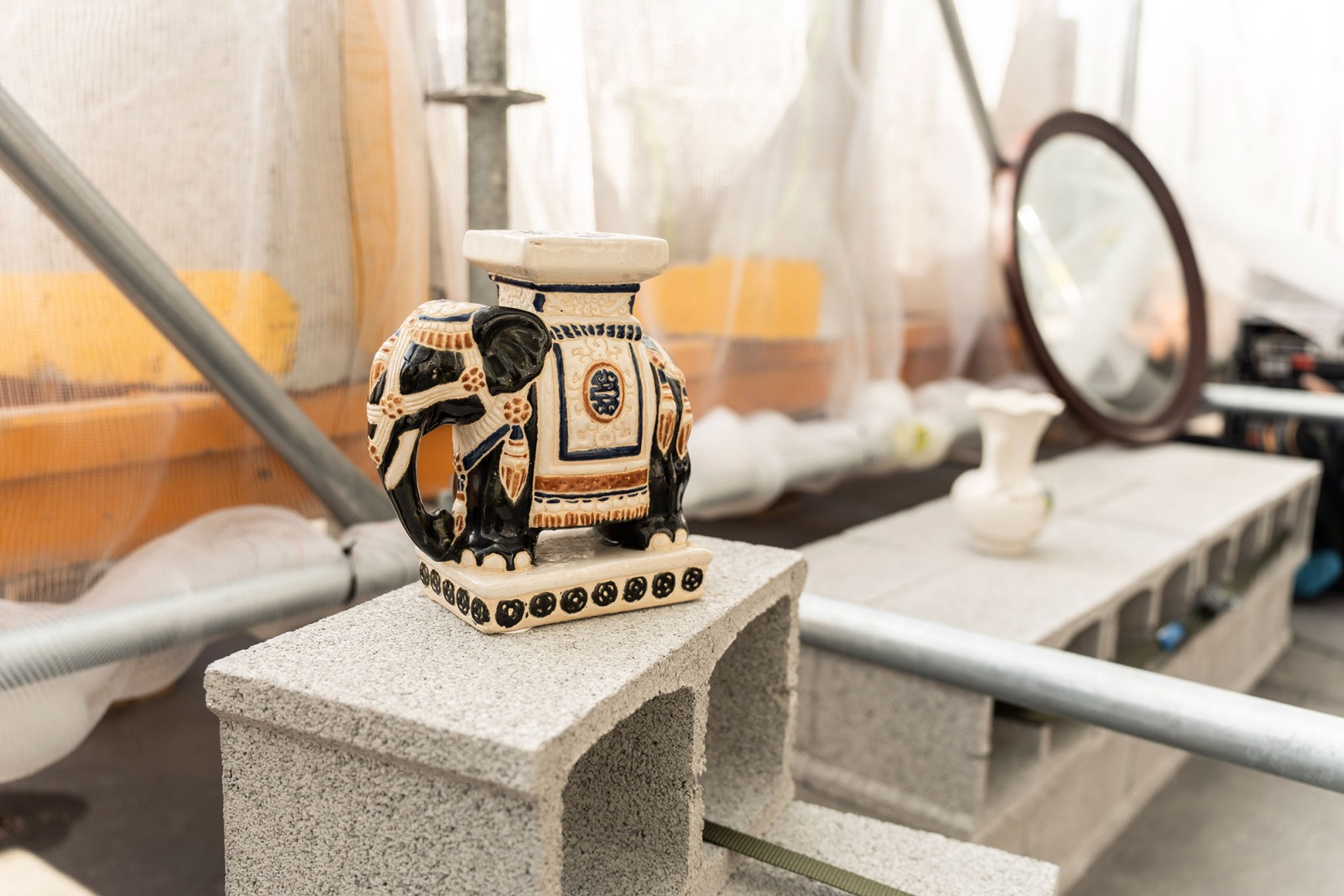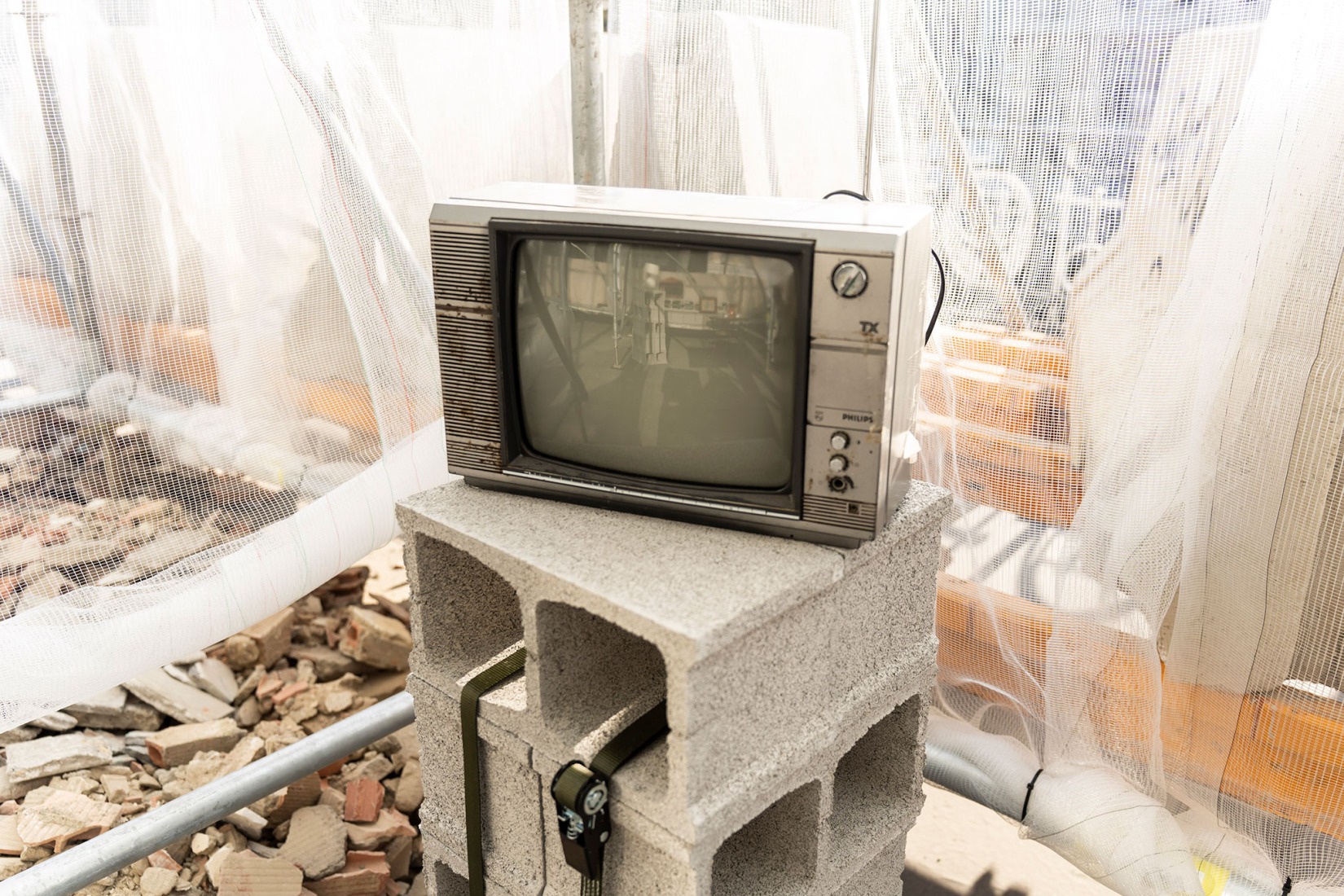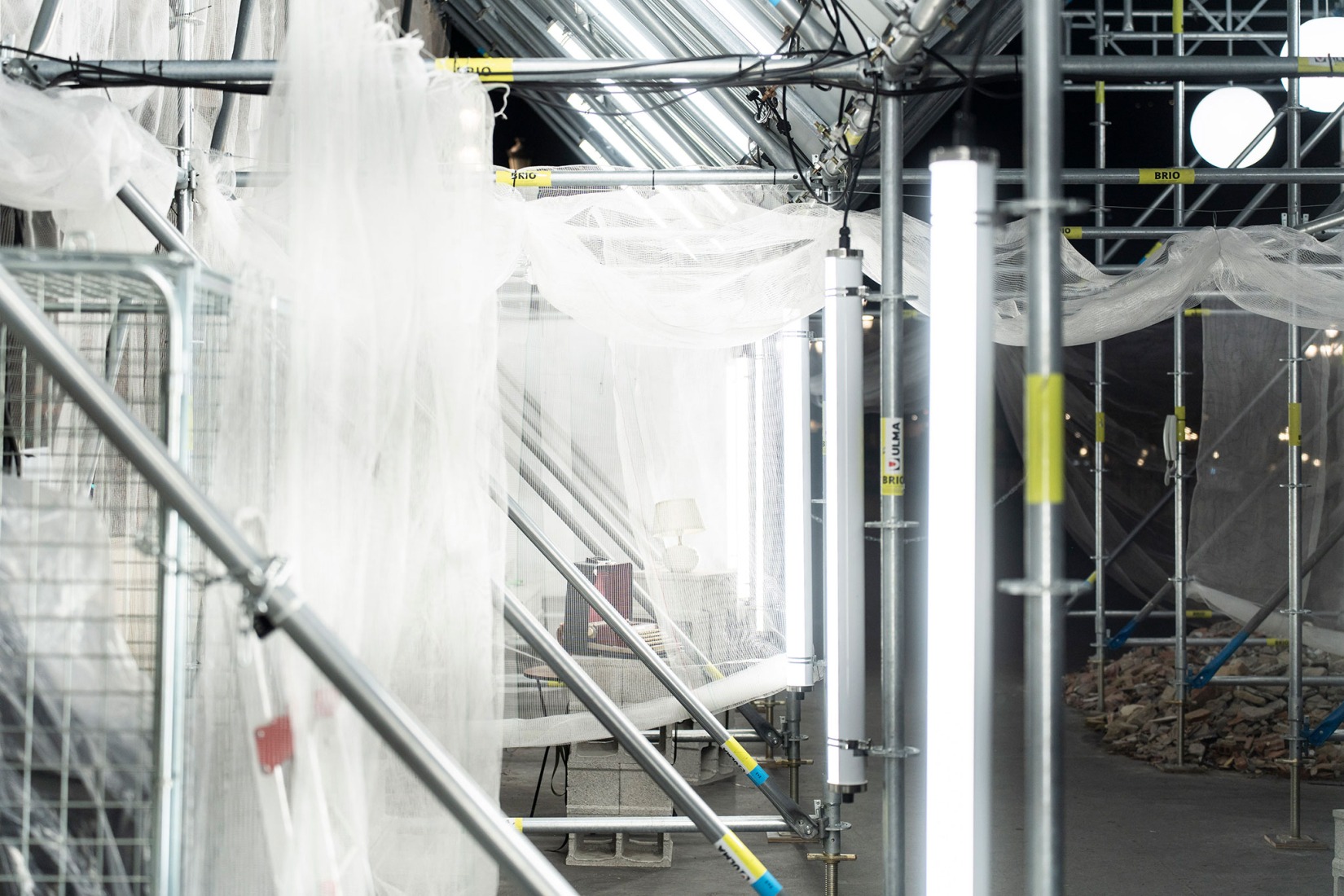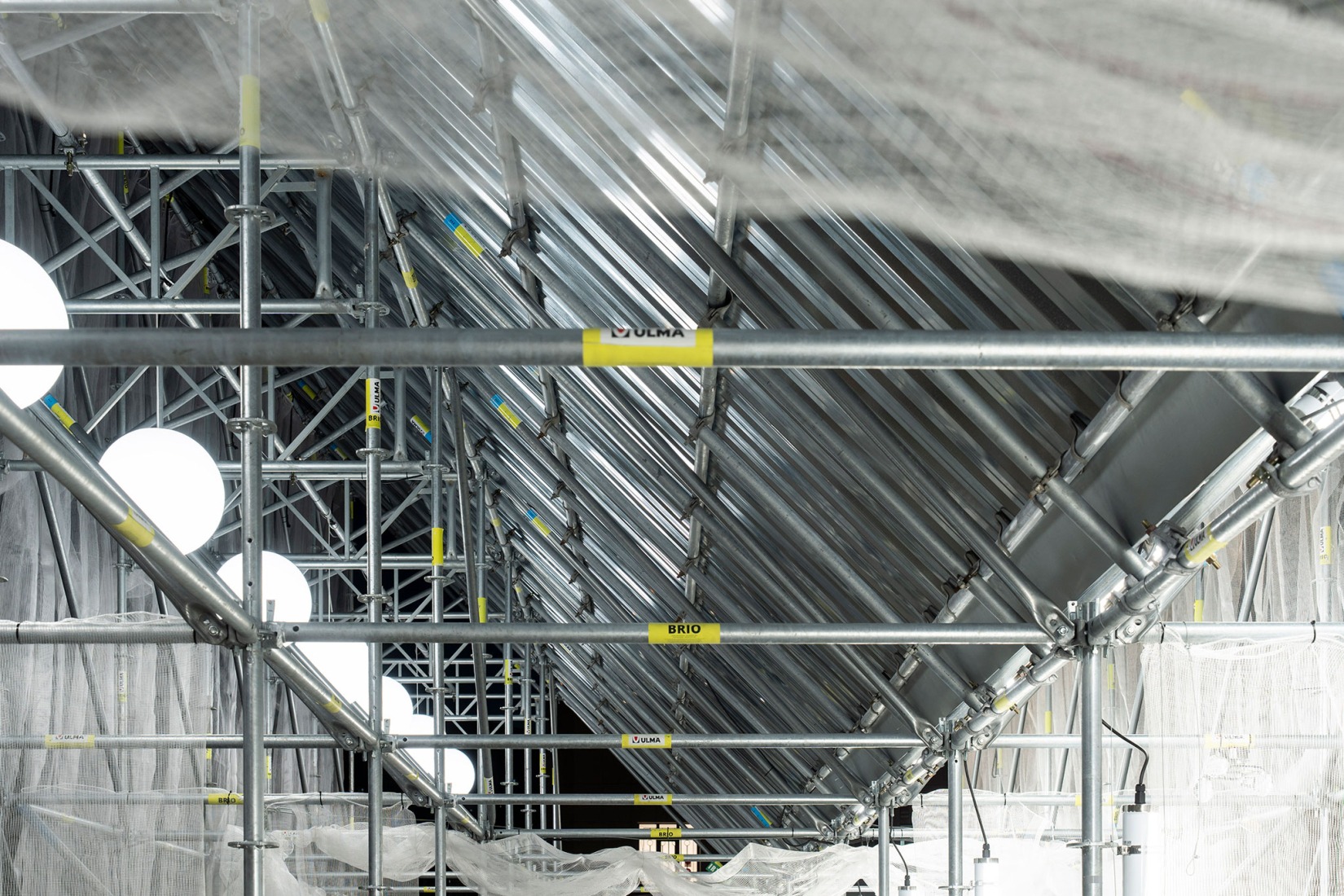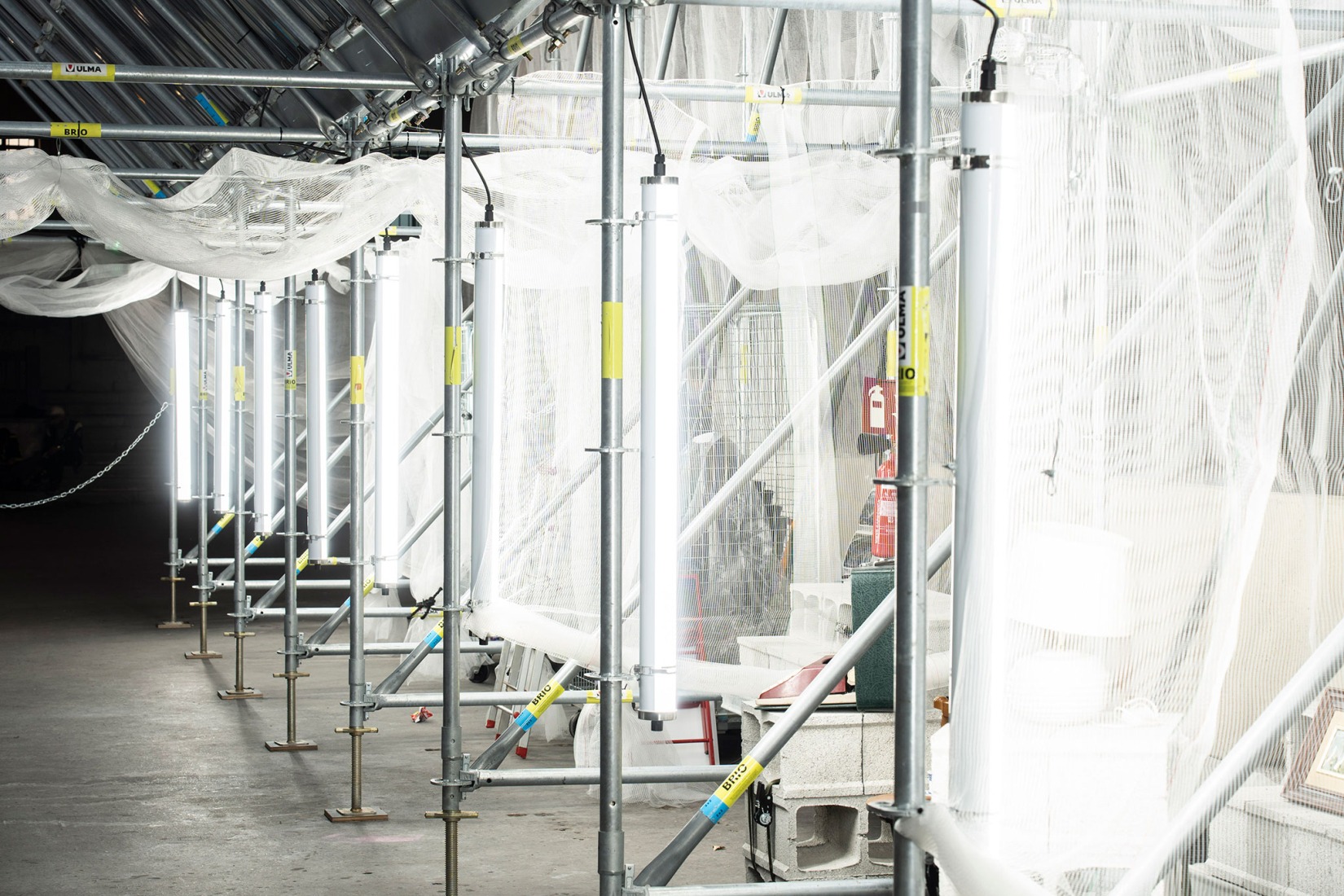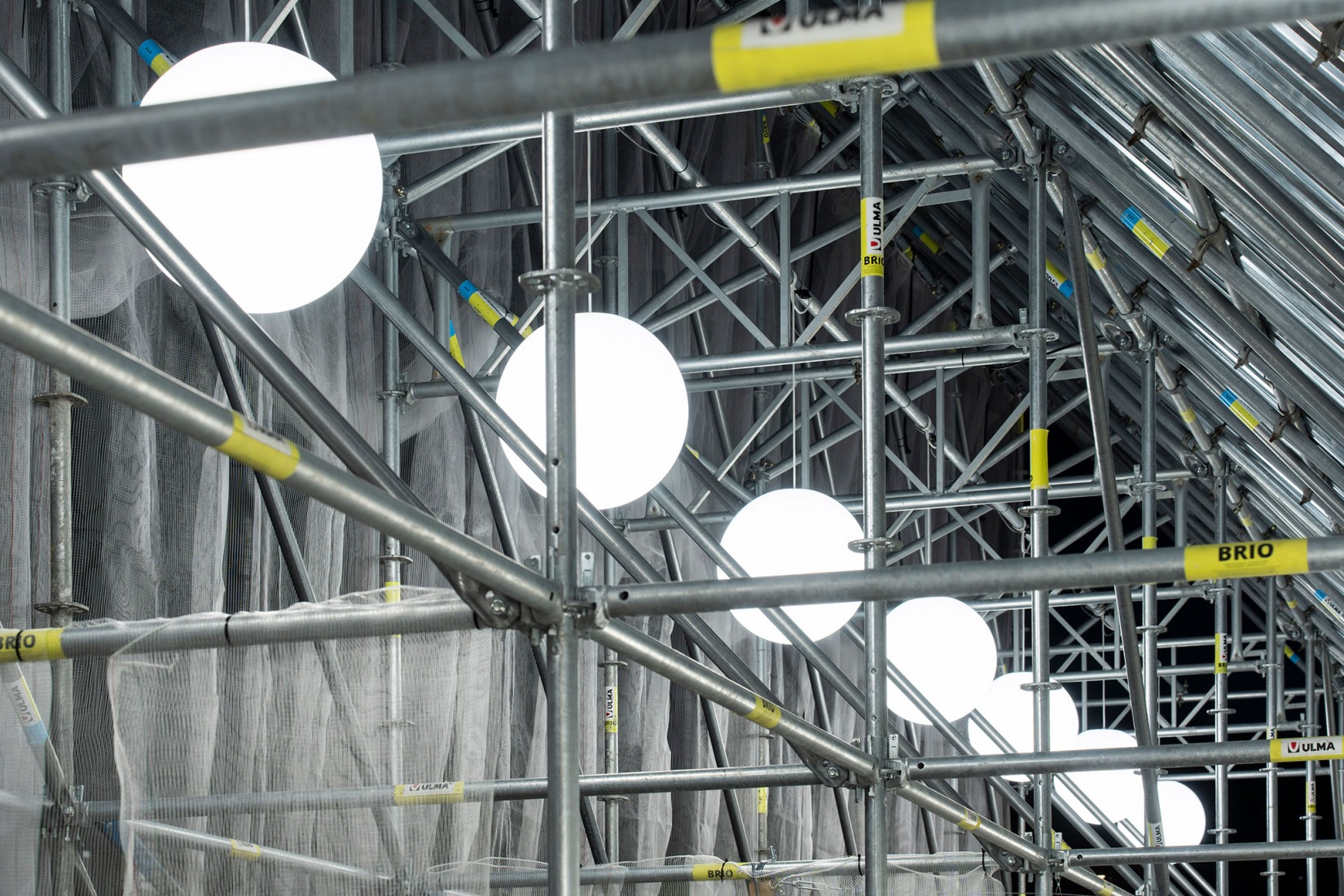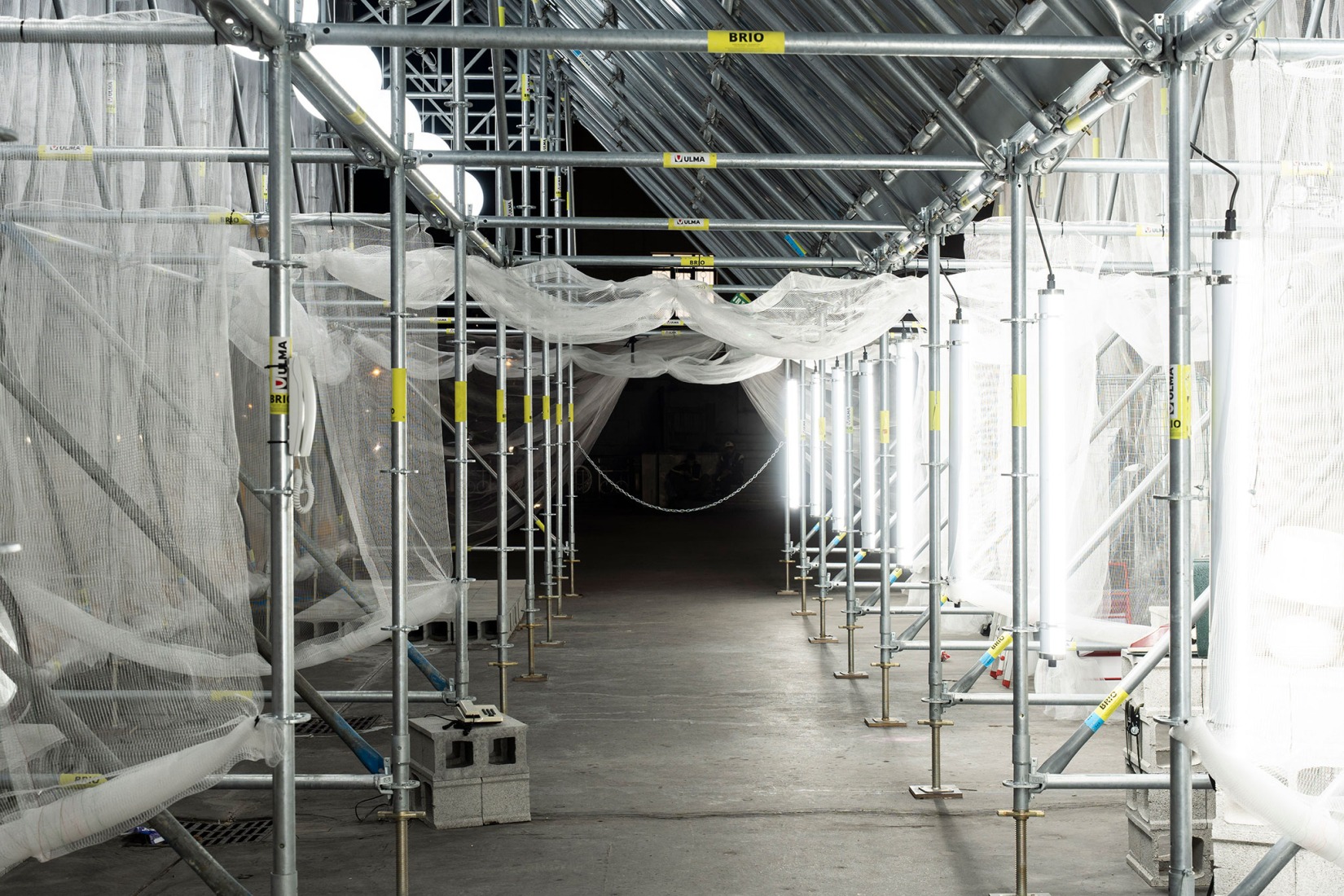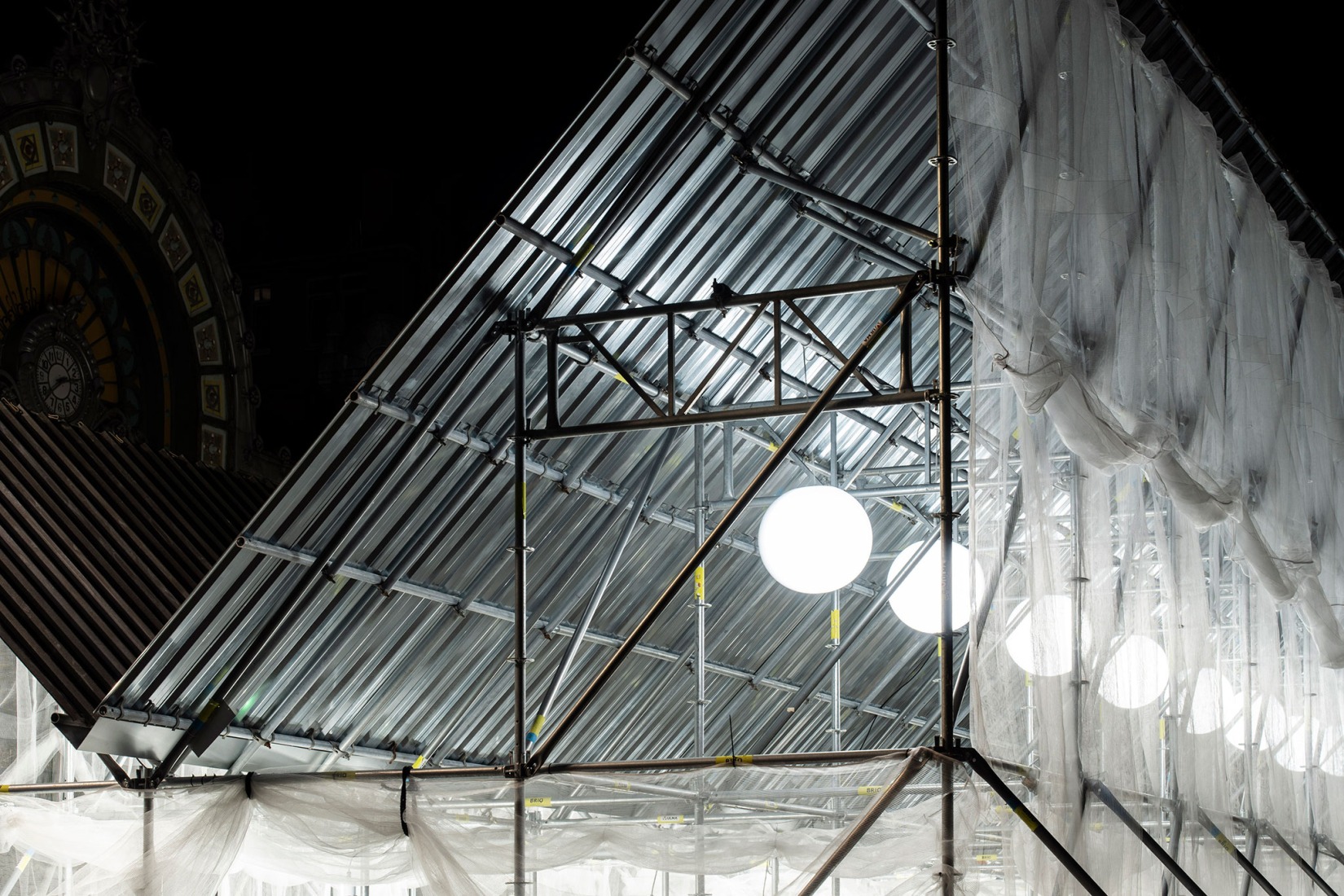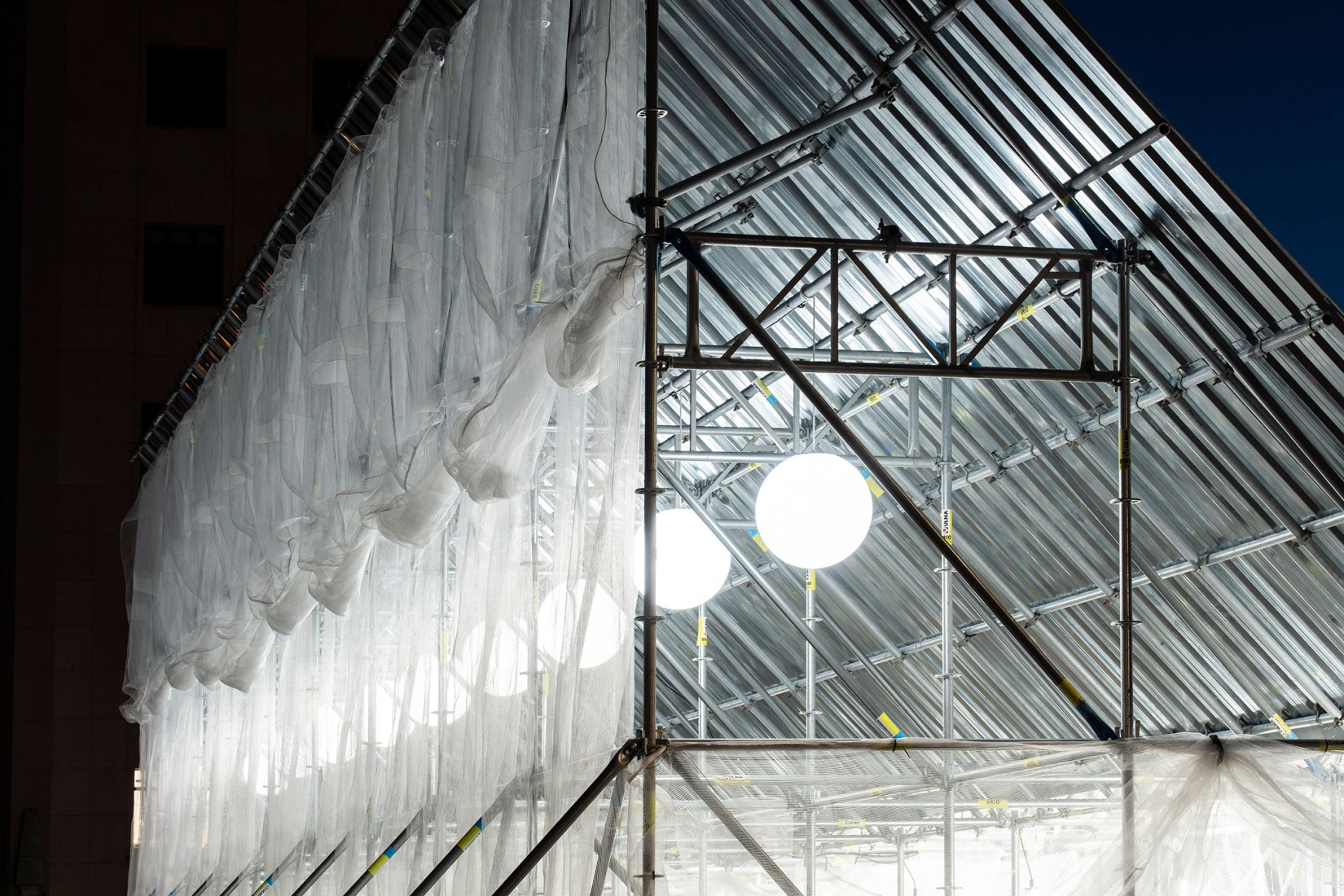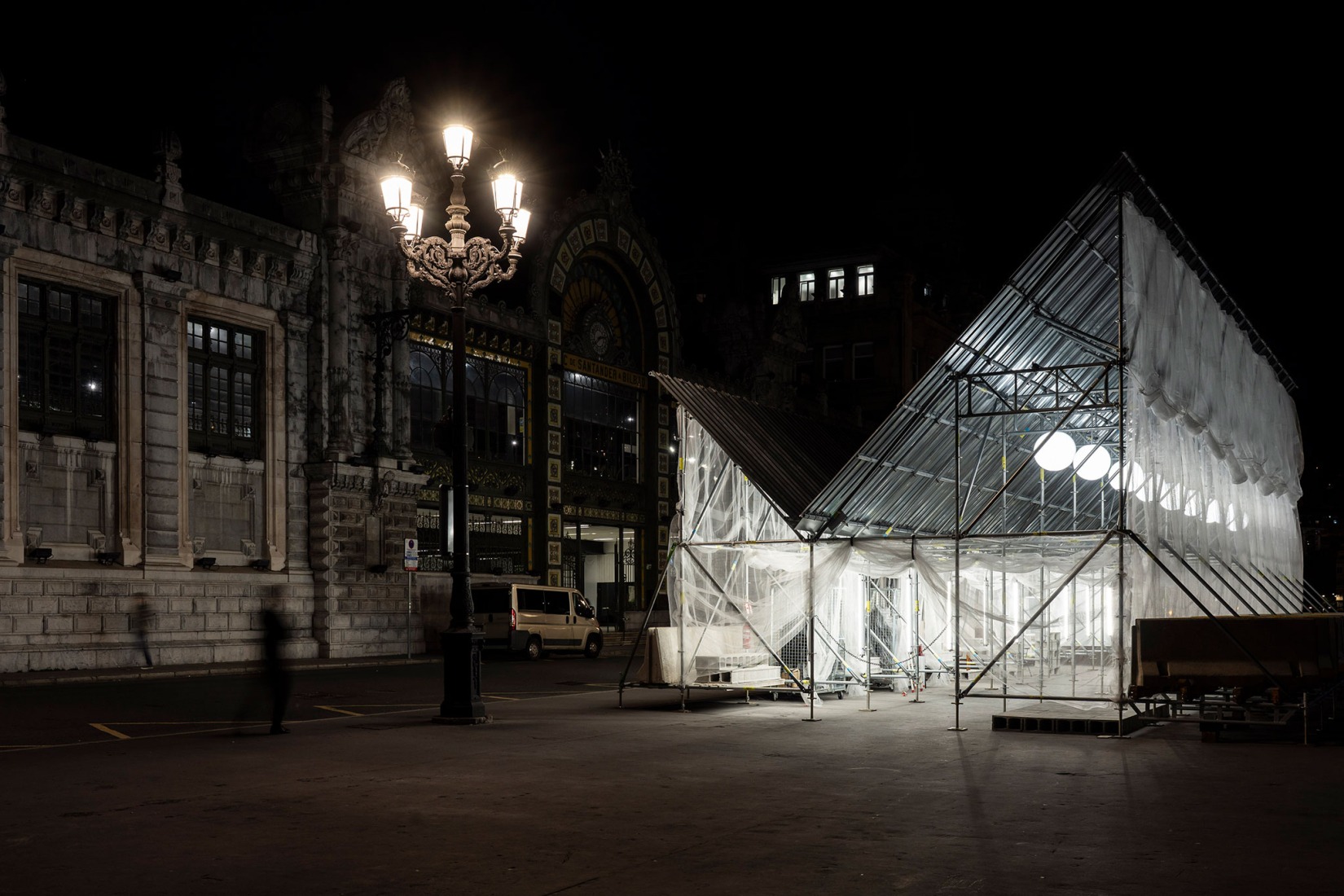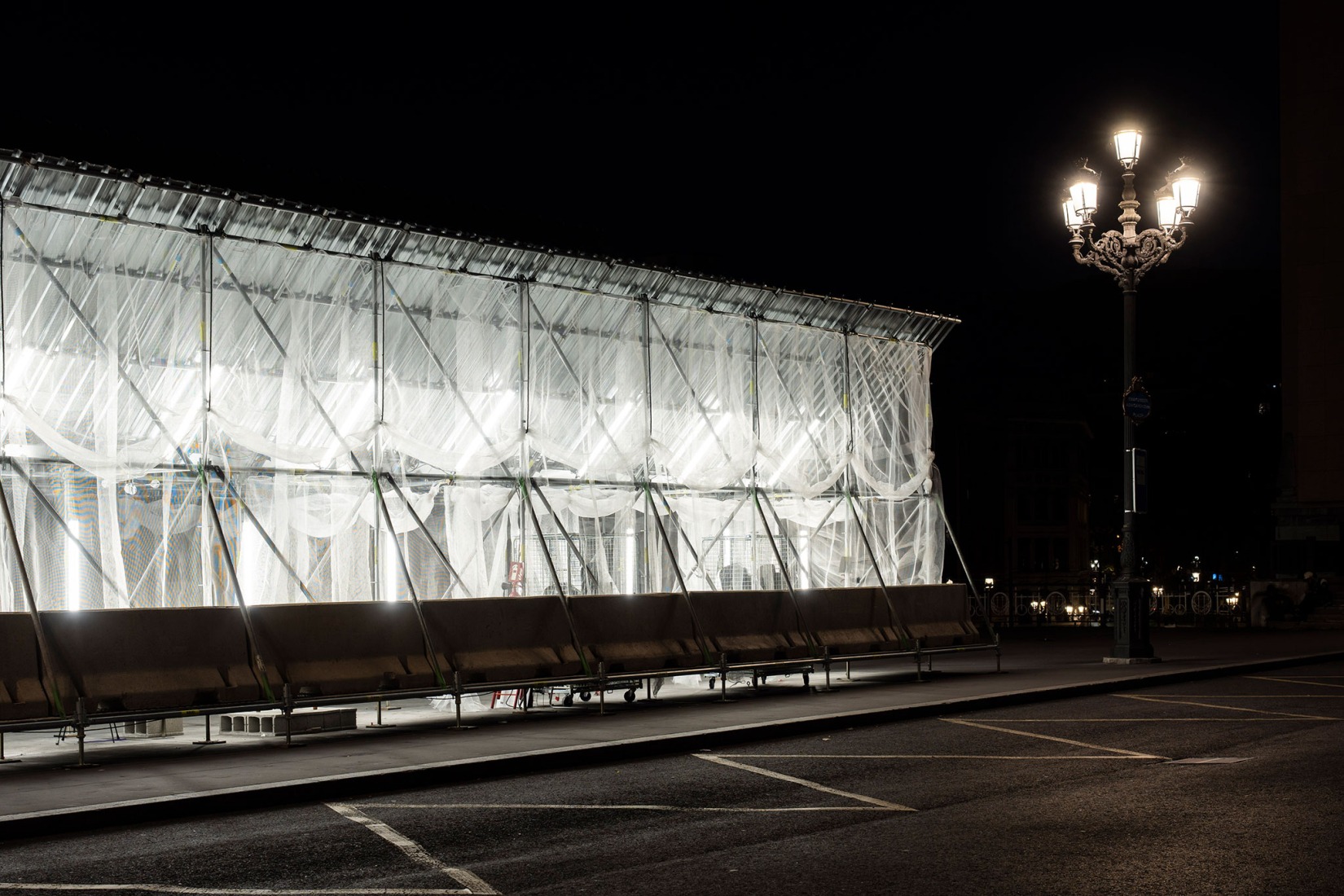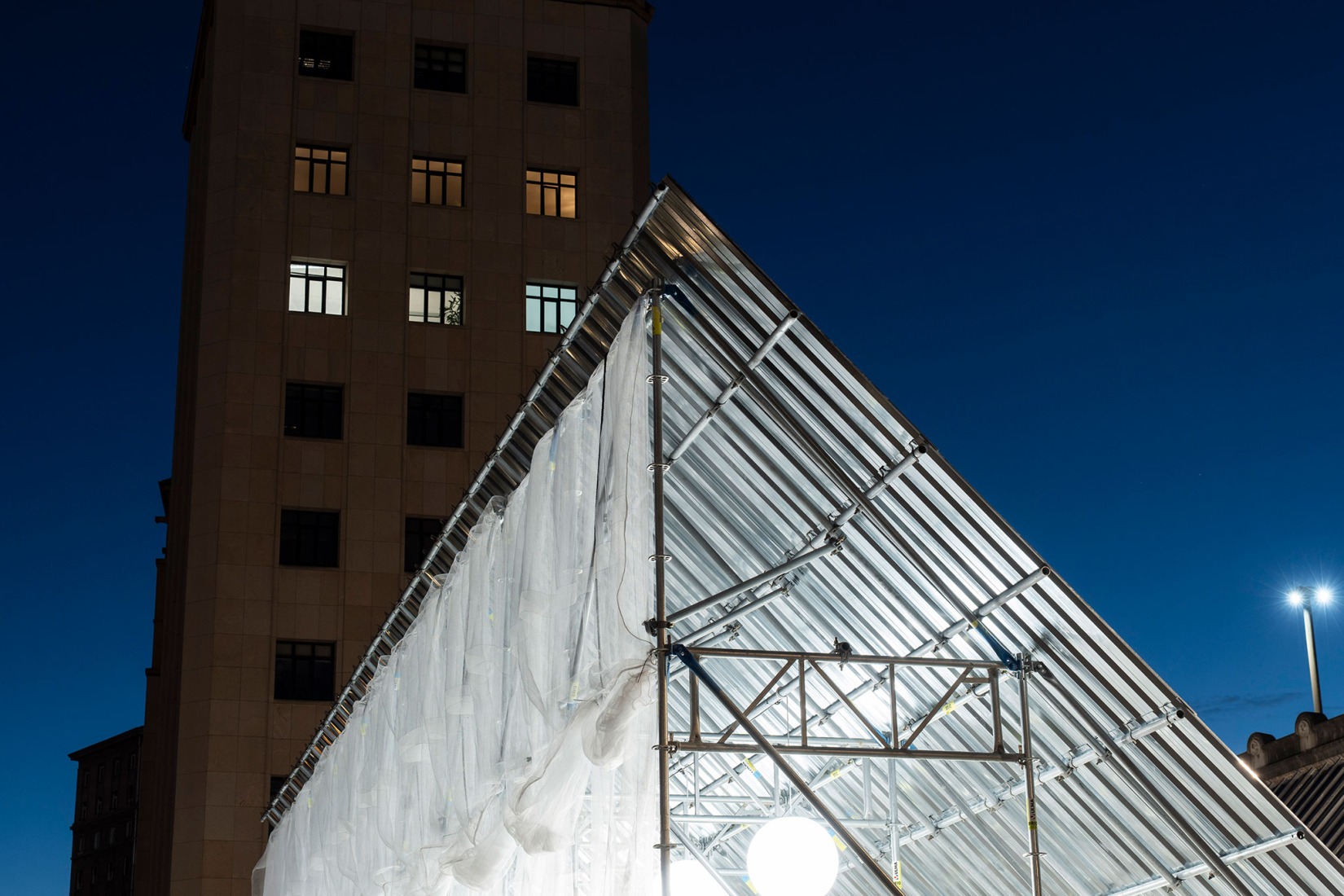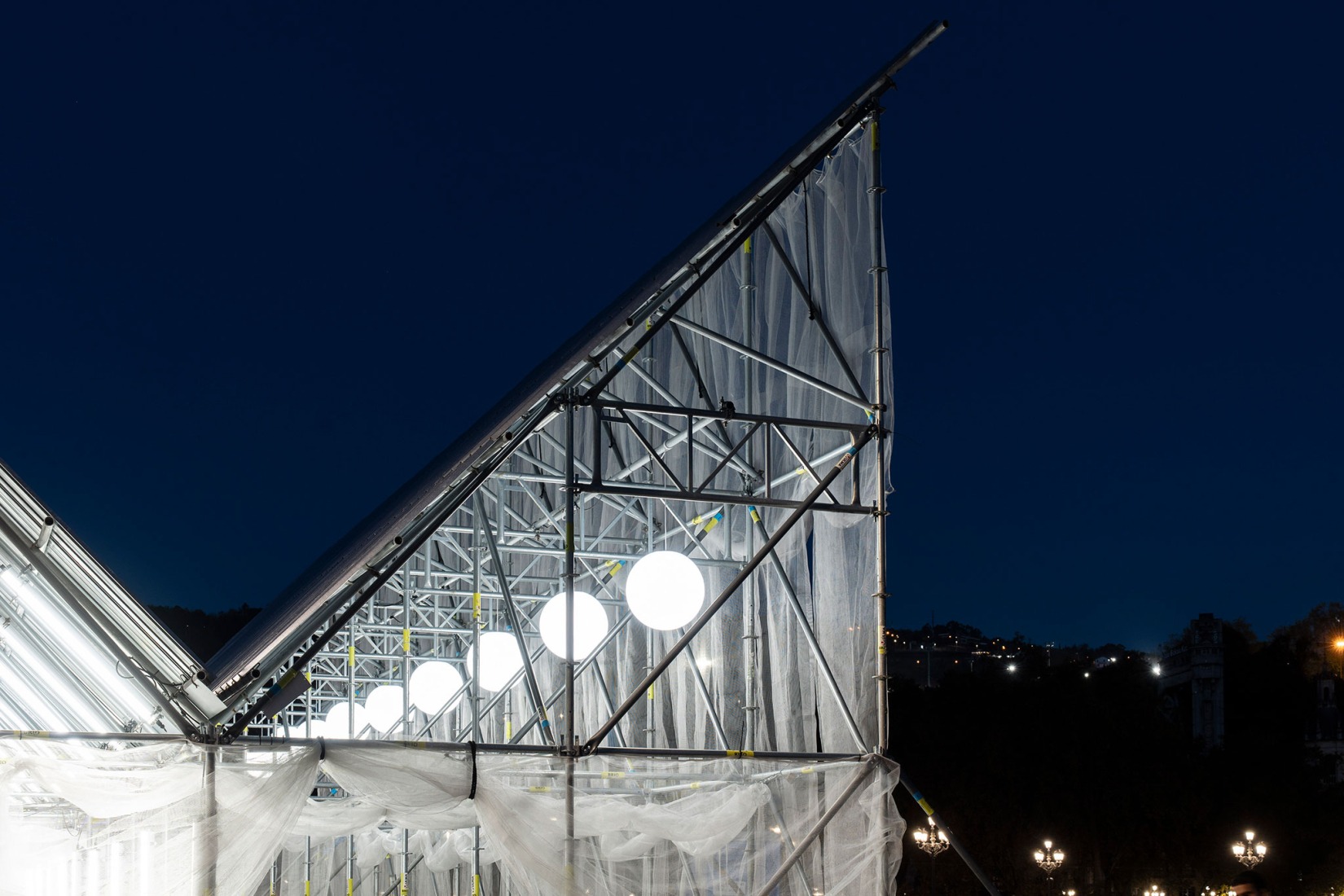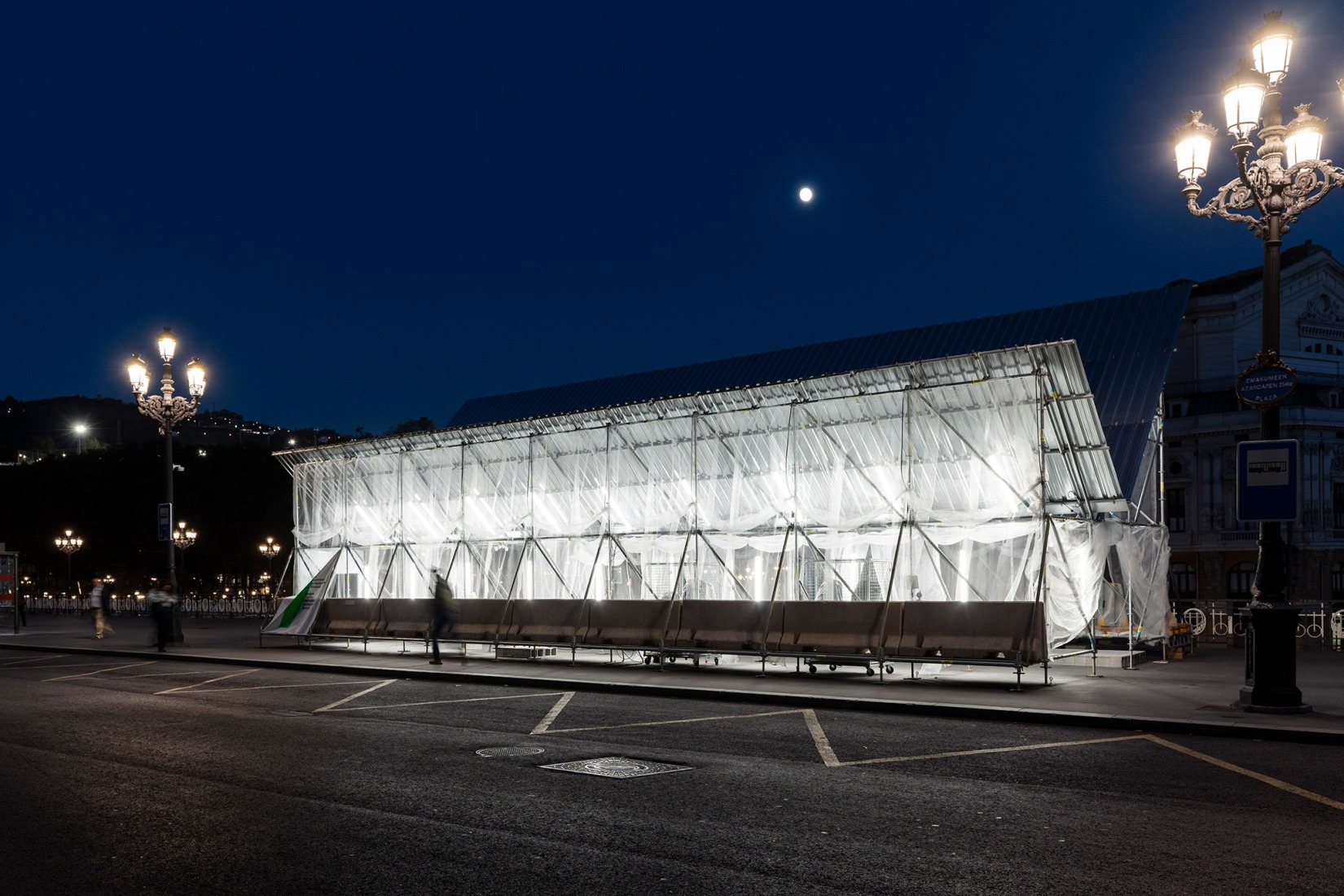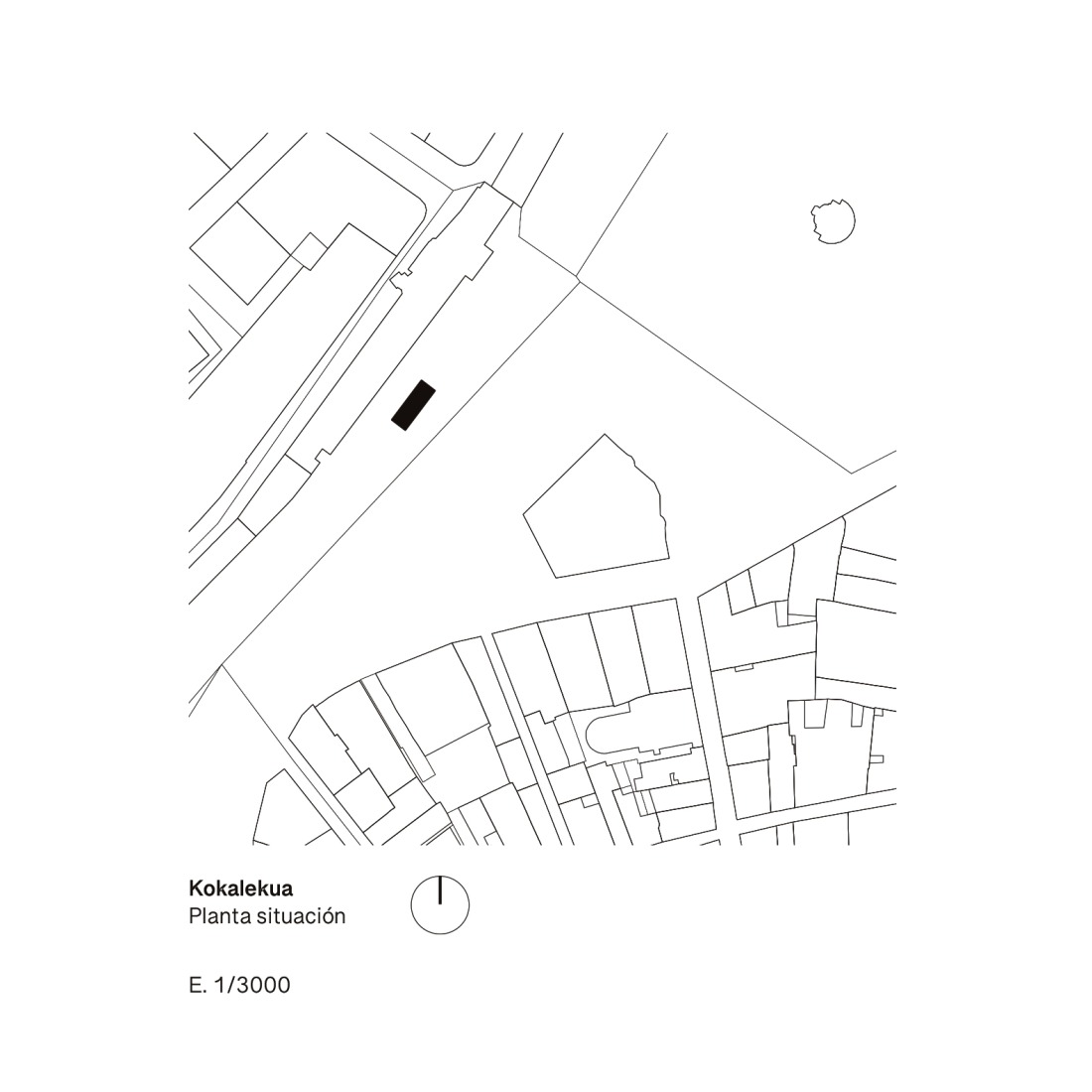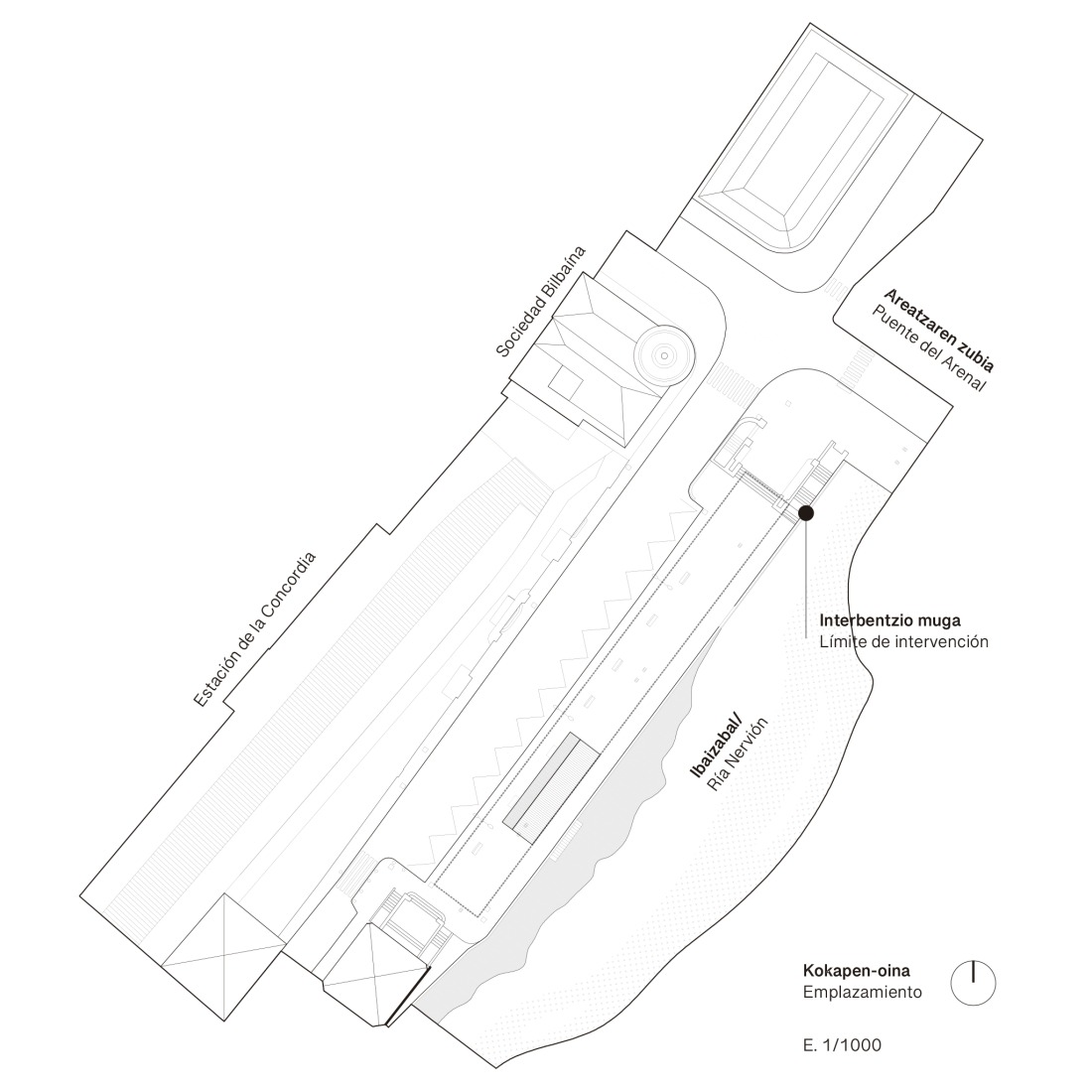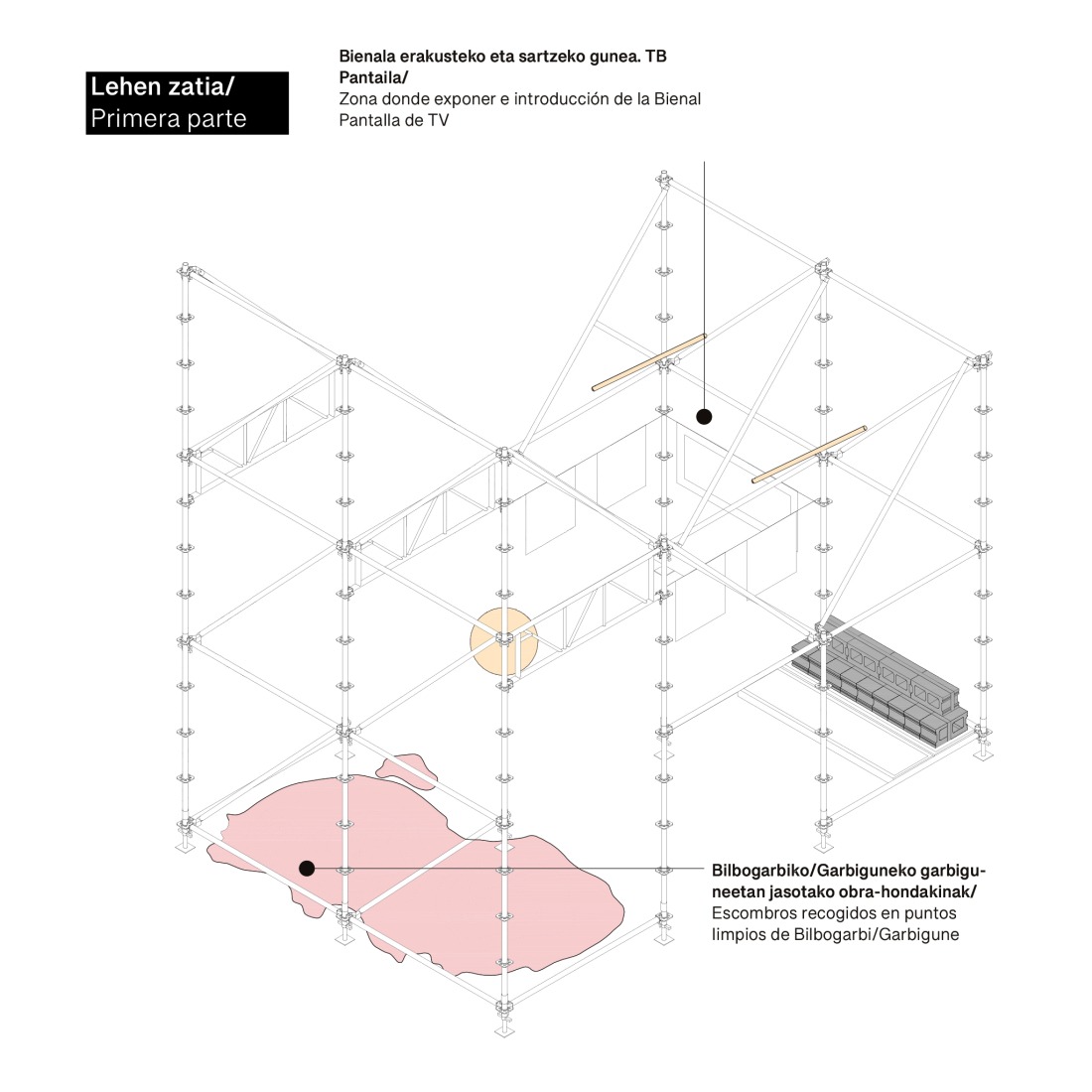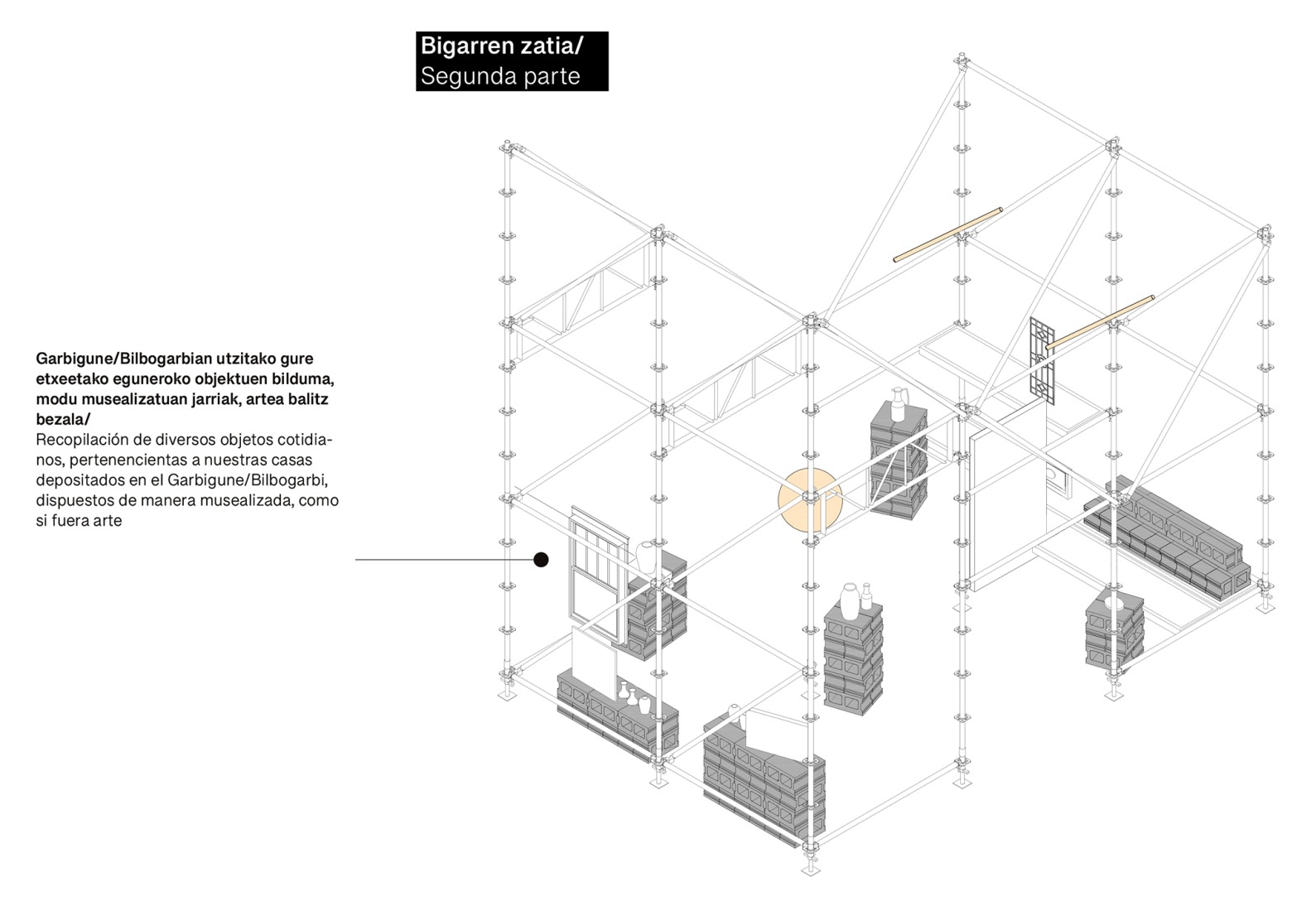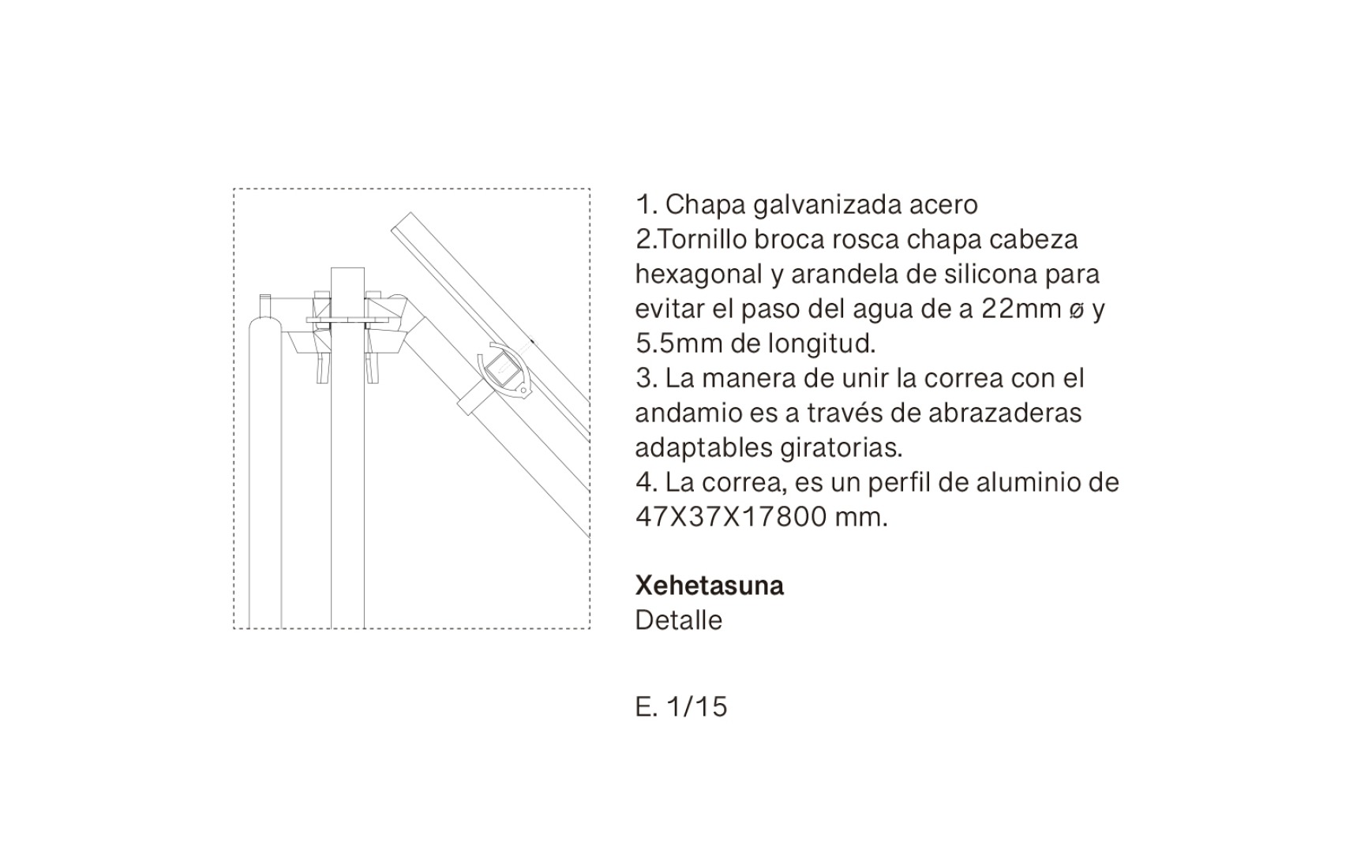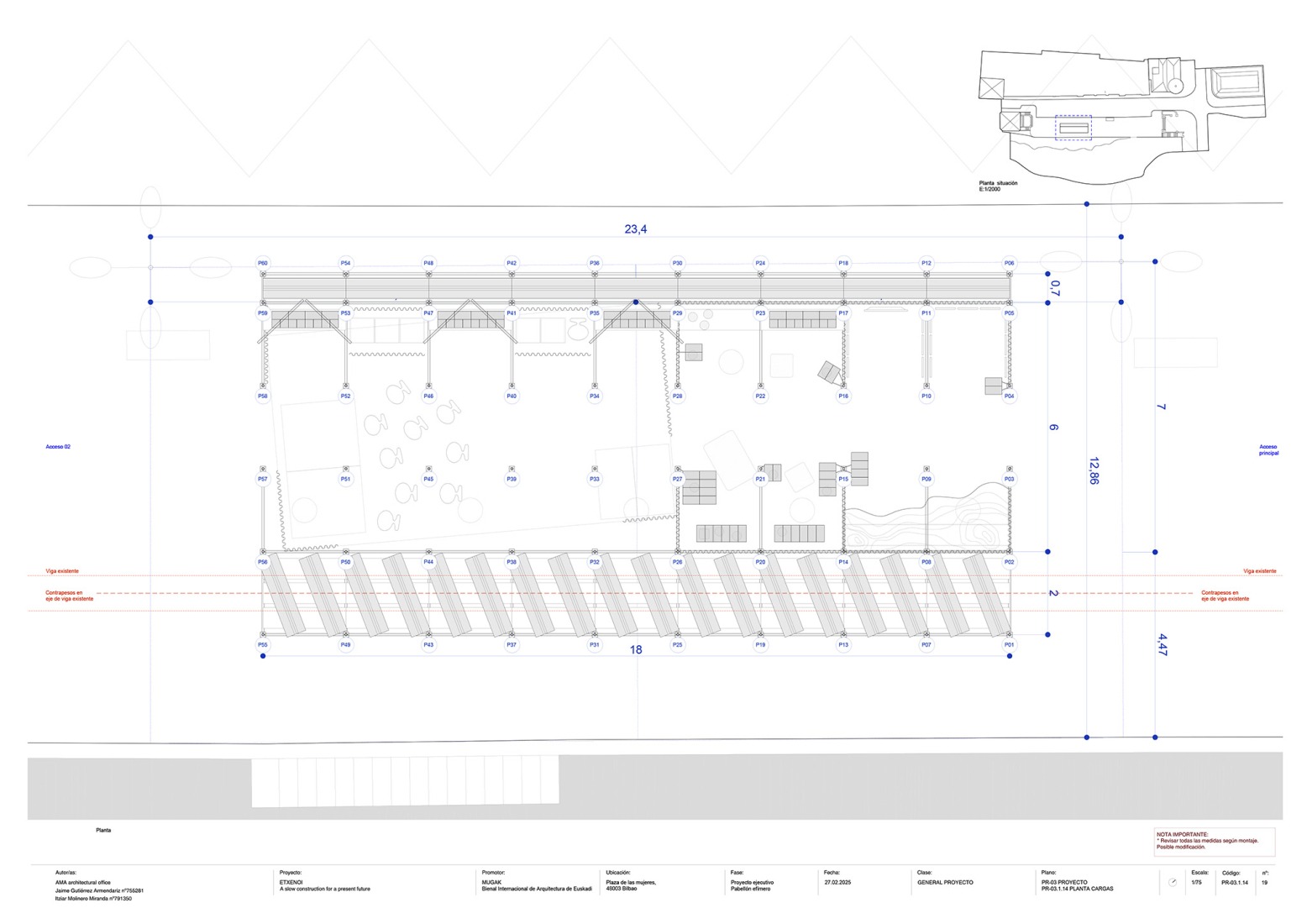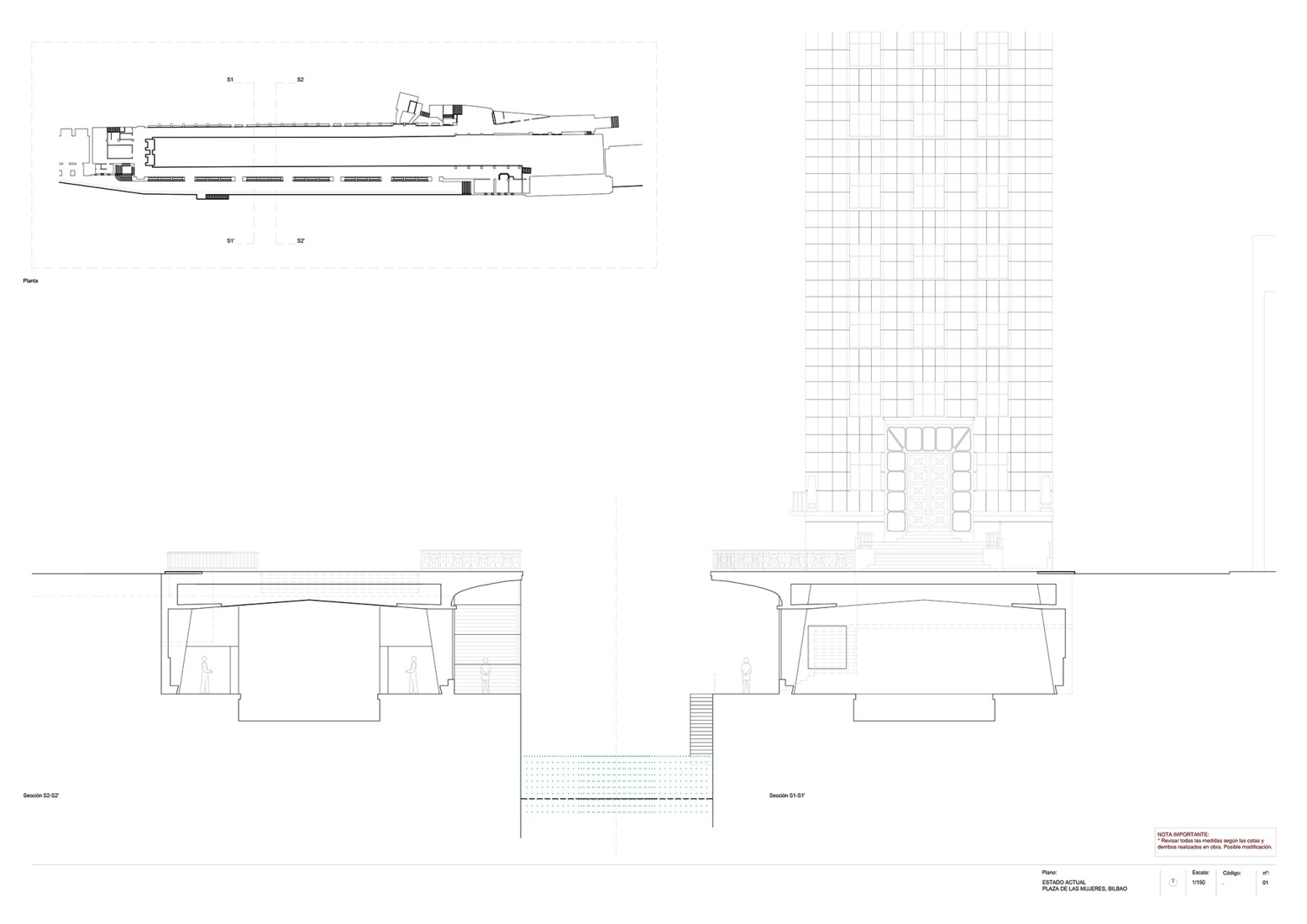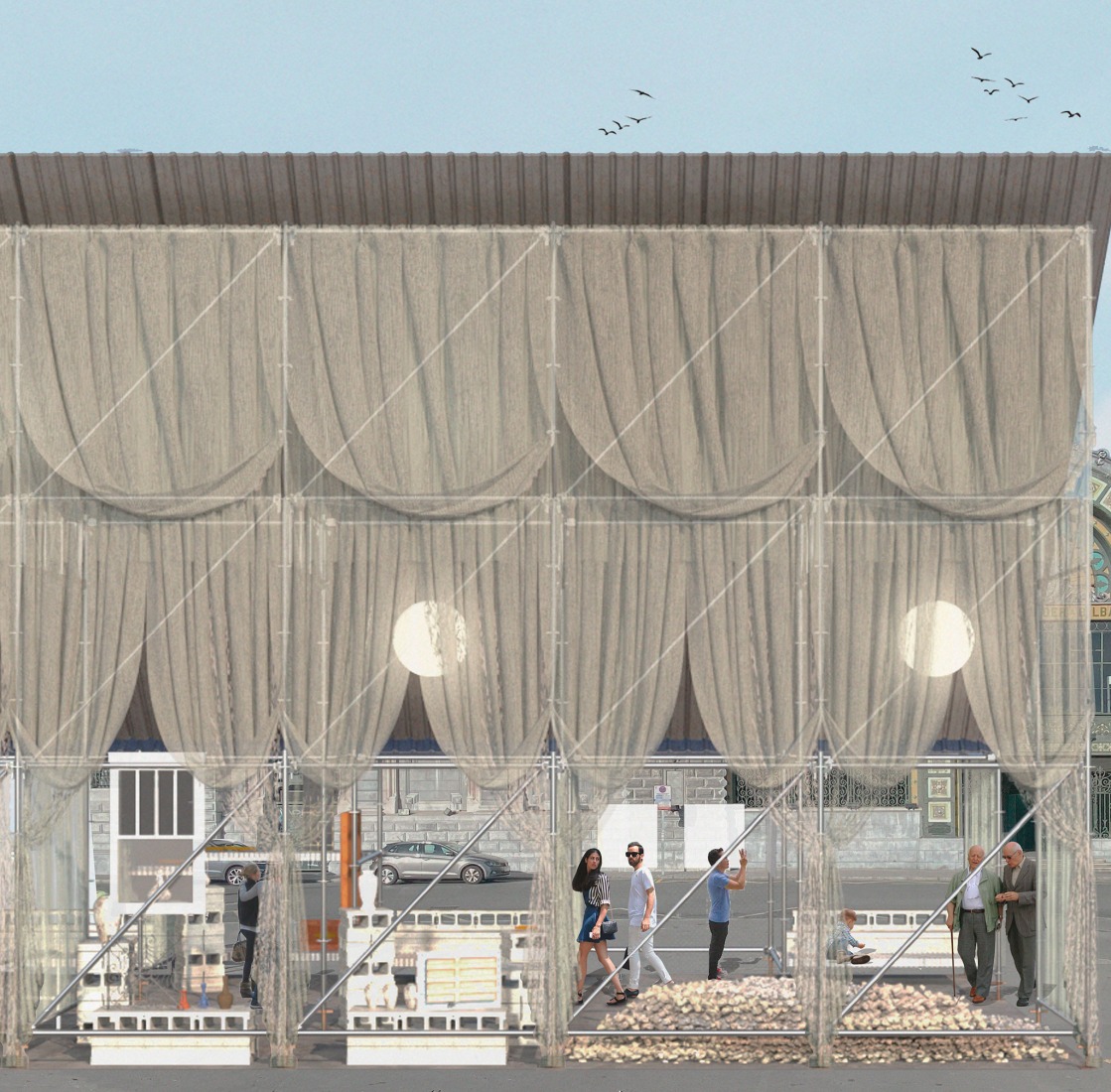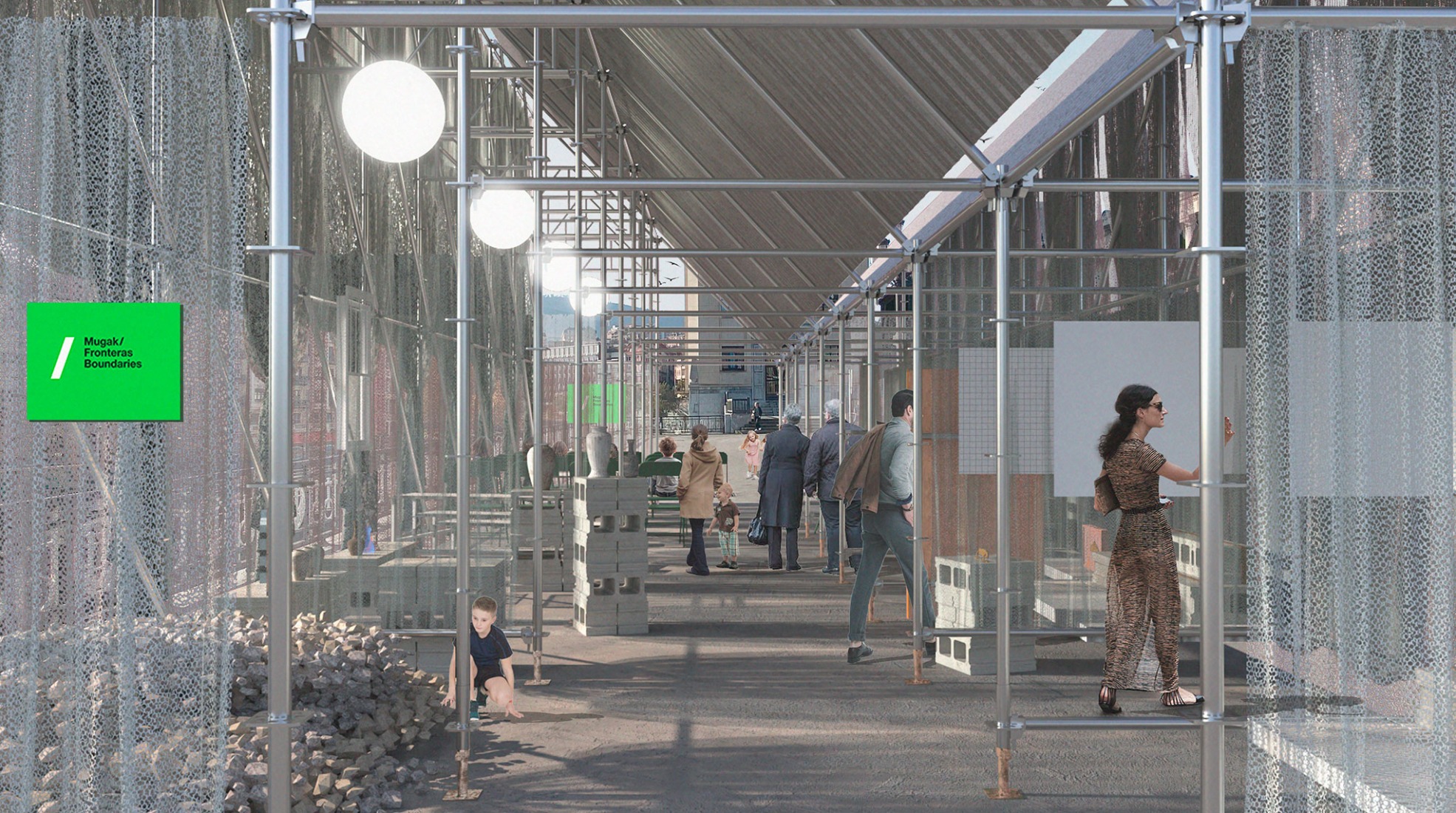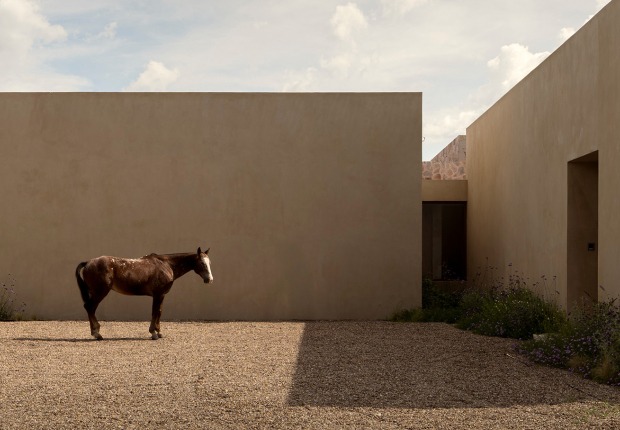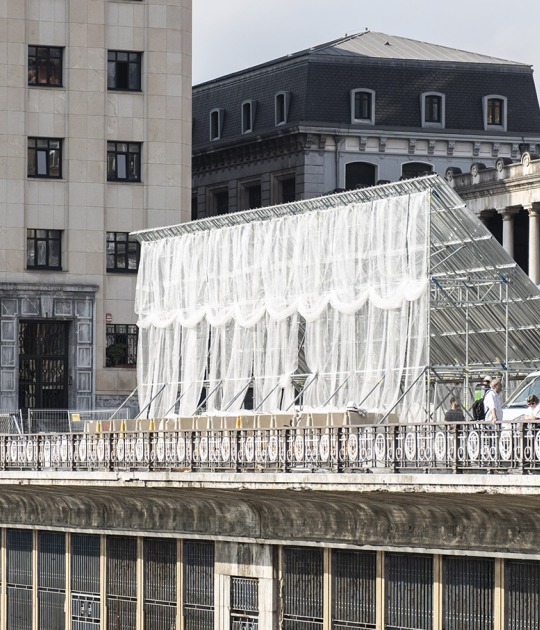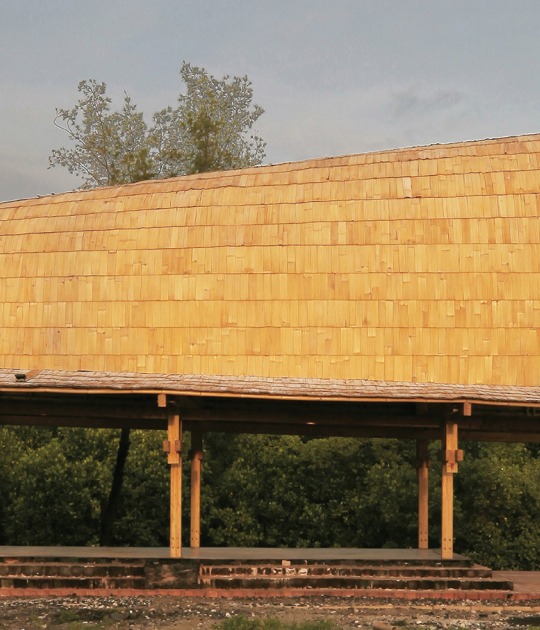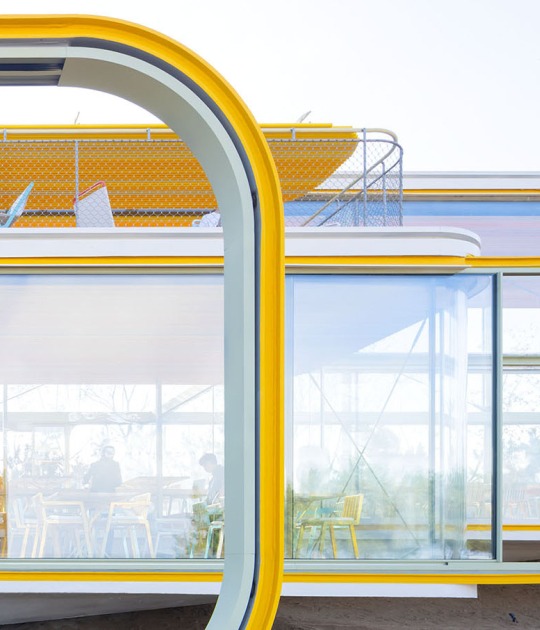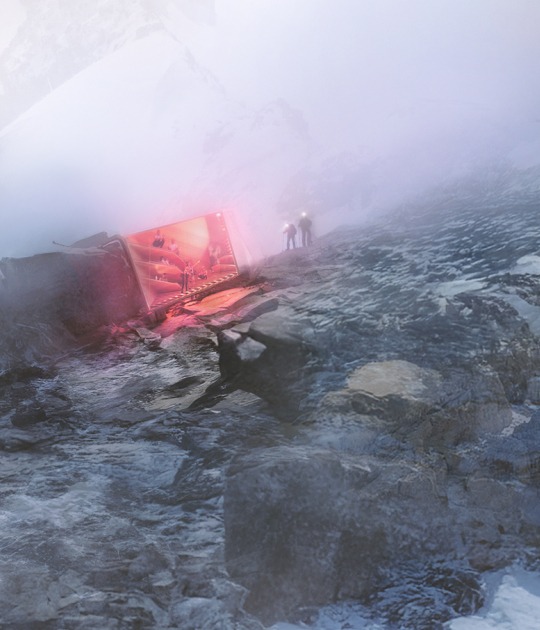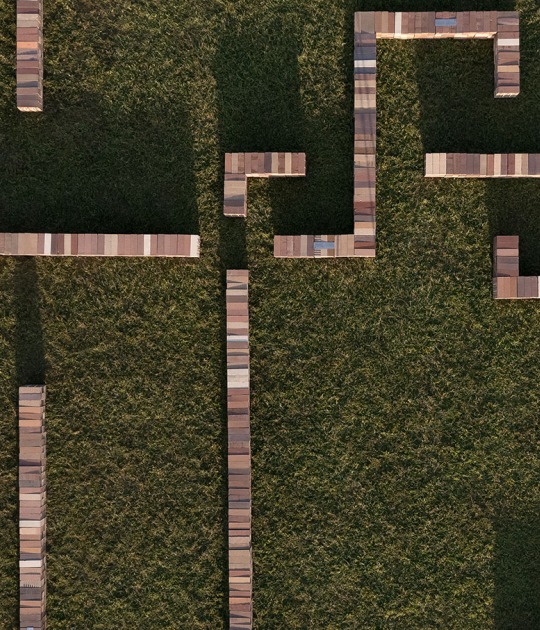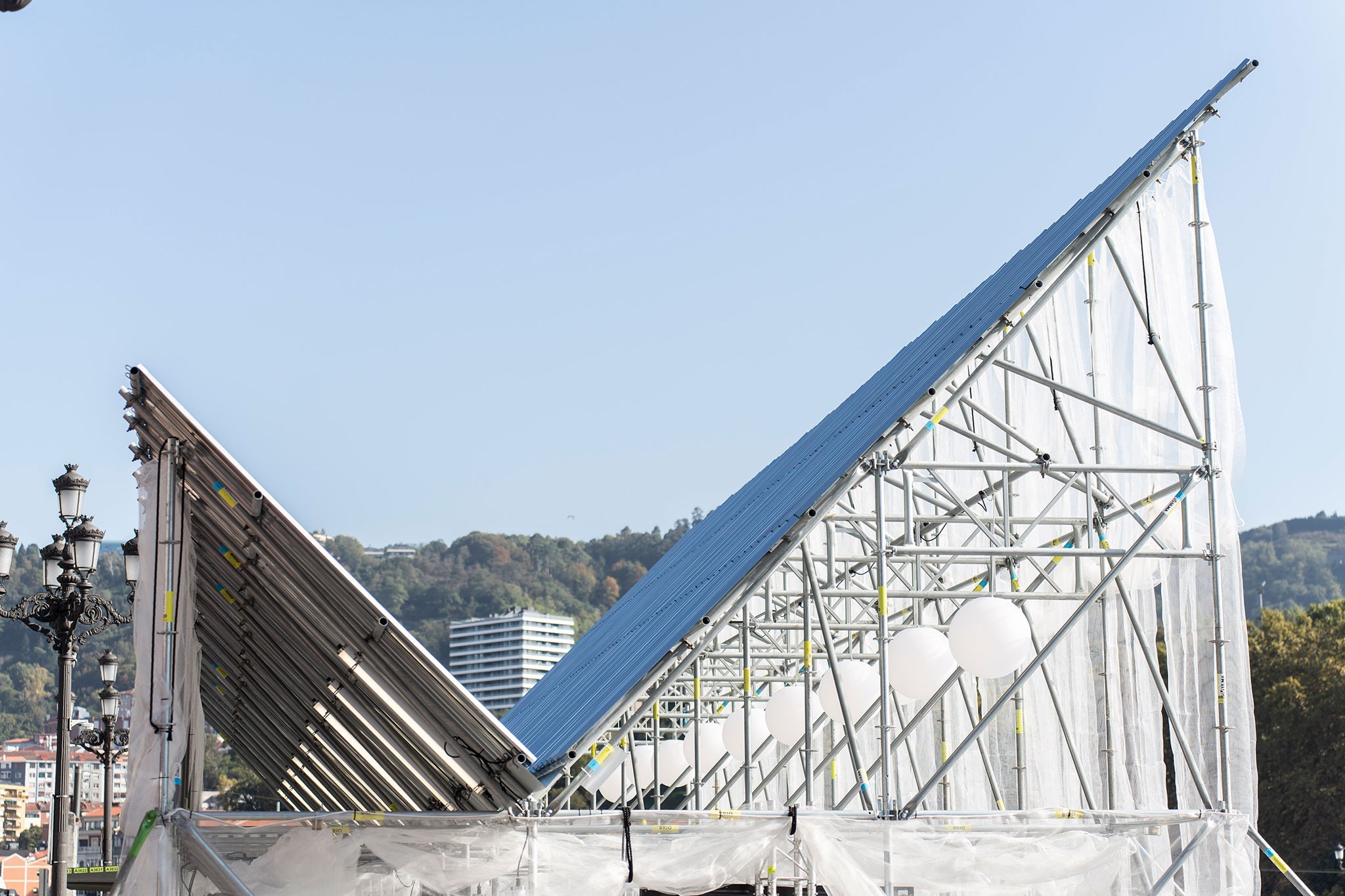
By drawing comparisons between different renovations and interventions associated with fast-fashion consumption, the project by AMA Architectural Office brings architecture closer to people, highlighting the repeated changes taking place within our homes without improving fundamental conditions such as accessibility and thermal comfort.
Far from positioning itself as an exclusively theoretical interpretation, the pavilion focuses on the domesticity of everyday life: the interior of homes. As a critique of insouciant renovation, the proposal reinterprets the concept of utopia, commonly associated with unattainable architectural gestures, promoting the ability to propose sustainable solutions that sensitively adapt to the real needs of residents.
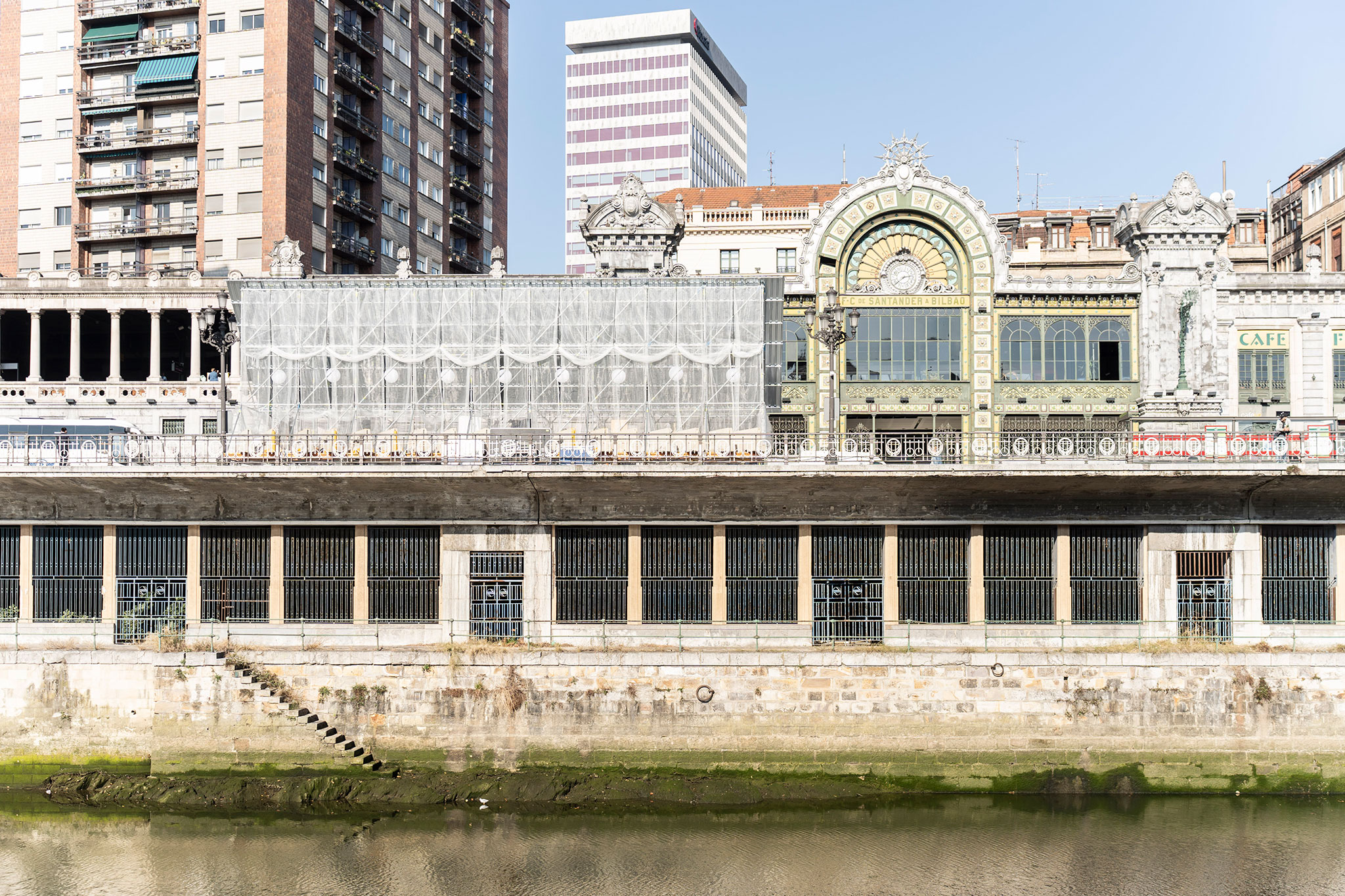
Etxenoi by AMA Architectural Office. Photograph by Mikel Blasco. Image courtesy by Mugak/2025.
Project description by AMA Architectural Office
The project reinterprets architecture as an exercise in collective responsibility. It compares renovations and interventions with the consumption of "fast fashion" and proposes citizens as active agents of change in building a more sustainable future.
"Many of the changes in our homes are driven by large companies that change their products every season. What happens inside our homes is extrapolated to the different buildings and public spaces that make up our cities, where many are subjected to urban cosmetic surgery without improving more important conditions such as accessibility, thermal comfort, or formal and structural adaptability to future changes".
The authors of the proposal explain.

The theoretical approach of the pavilion is part of a critical reinterpretation of the concept of utopia, as proposed by the biennial organizers, but approached from a different perspective. Since its inception, utopia has functioned as a conceptual device that allows us to shift present realities toward alternative scenarios—whether dystopian, idealized, or simply unattainable—serving as a mirror of our limitations or aspirations. However, far from adhering to an abstract or unattainable vision of the term, this proposal seeks to examine what happens when utopia ceases to be conceived as a remote aspiration and transforms into a concrete, habitable, and approachable possibility.
In this sense, the pavilion deliberately distances itself from a pretentious or excessively theoretical interpretation of the concept, focusing instead on the everyday, the domestic, and the tangible: the interior of our homes. Through this approach, the aim is not only to bring architecture to a broader audience but also to place the debate about the future of living on an accessible and urgent level.
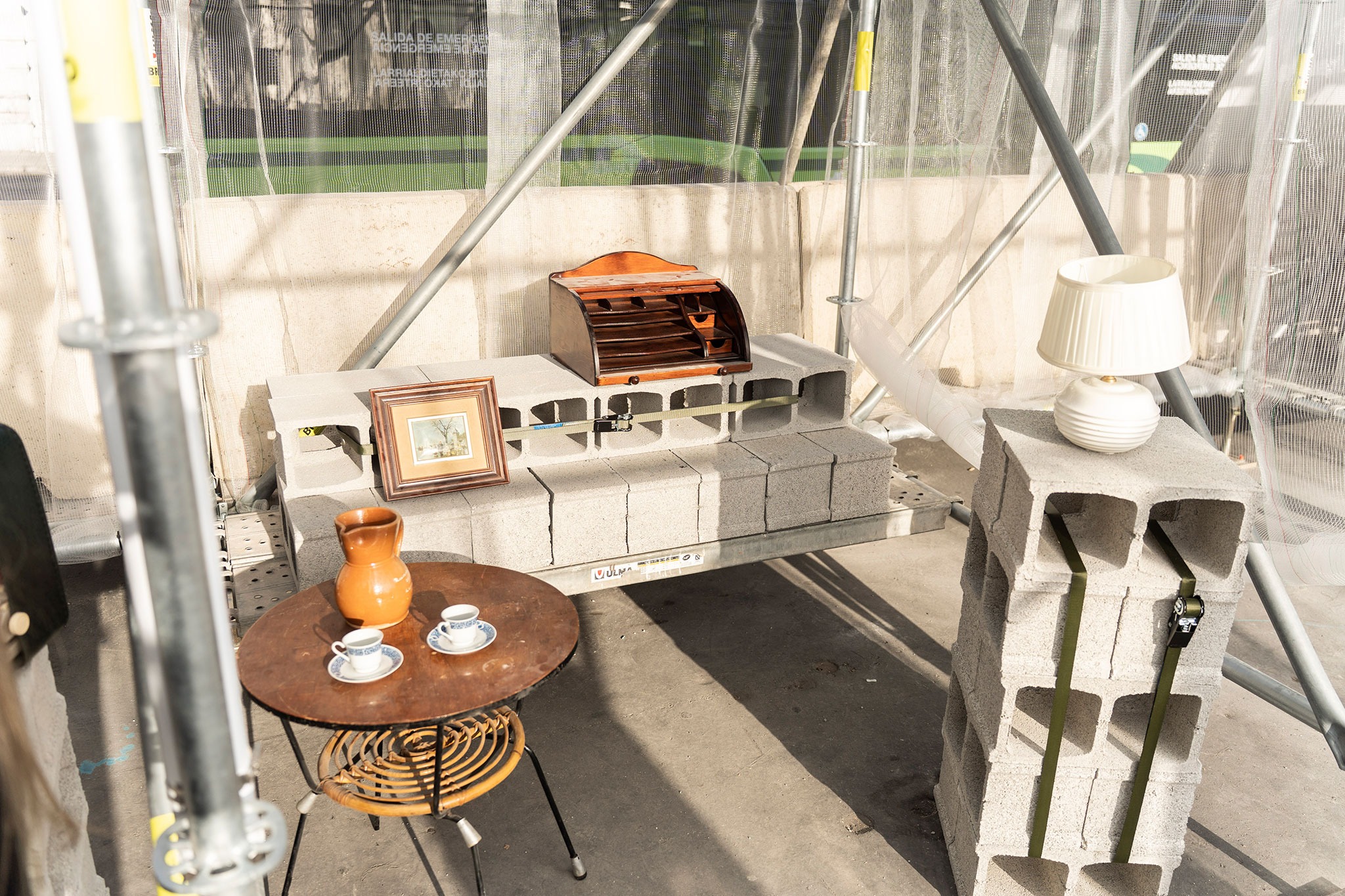
The utopian transformation of our homes is no longer played out in grand architectural gestures, but in the ability to propose sustainable, adaptable solutions that are sensitive to the real needs of their inhabitants. Thus, utopia is reformulated not as an unattainable goal, but as a tool for direct intervention in the possible.
